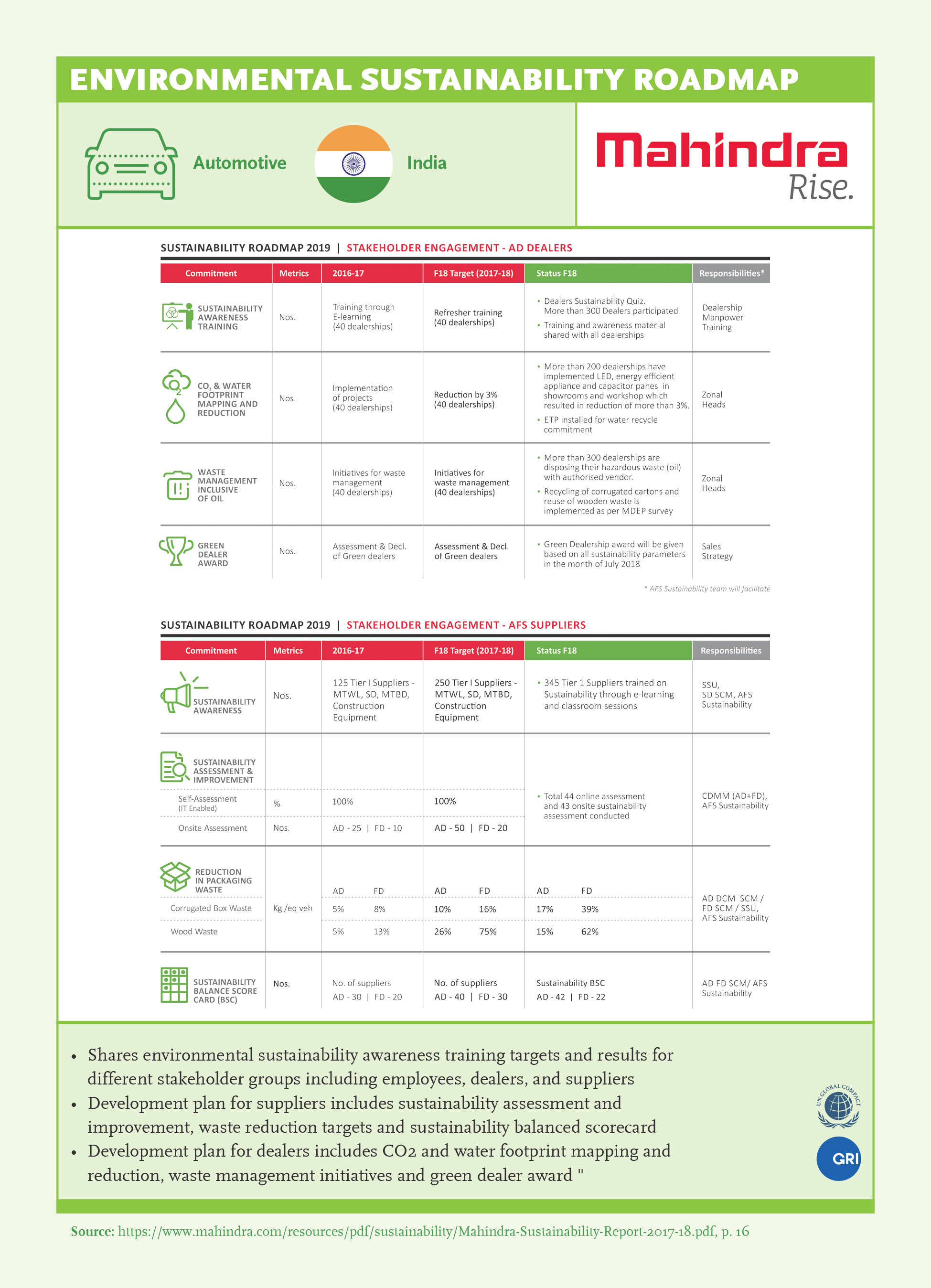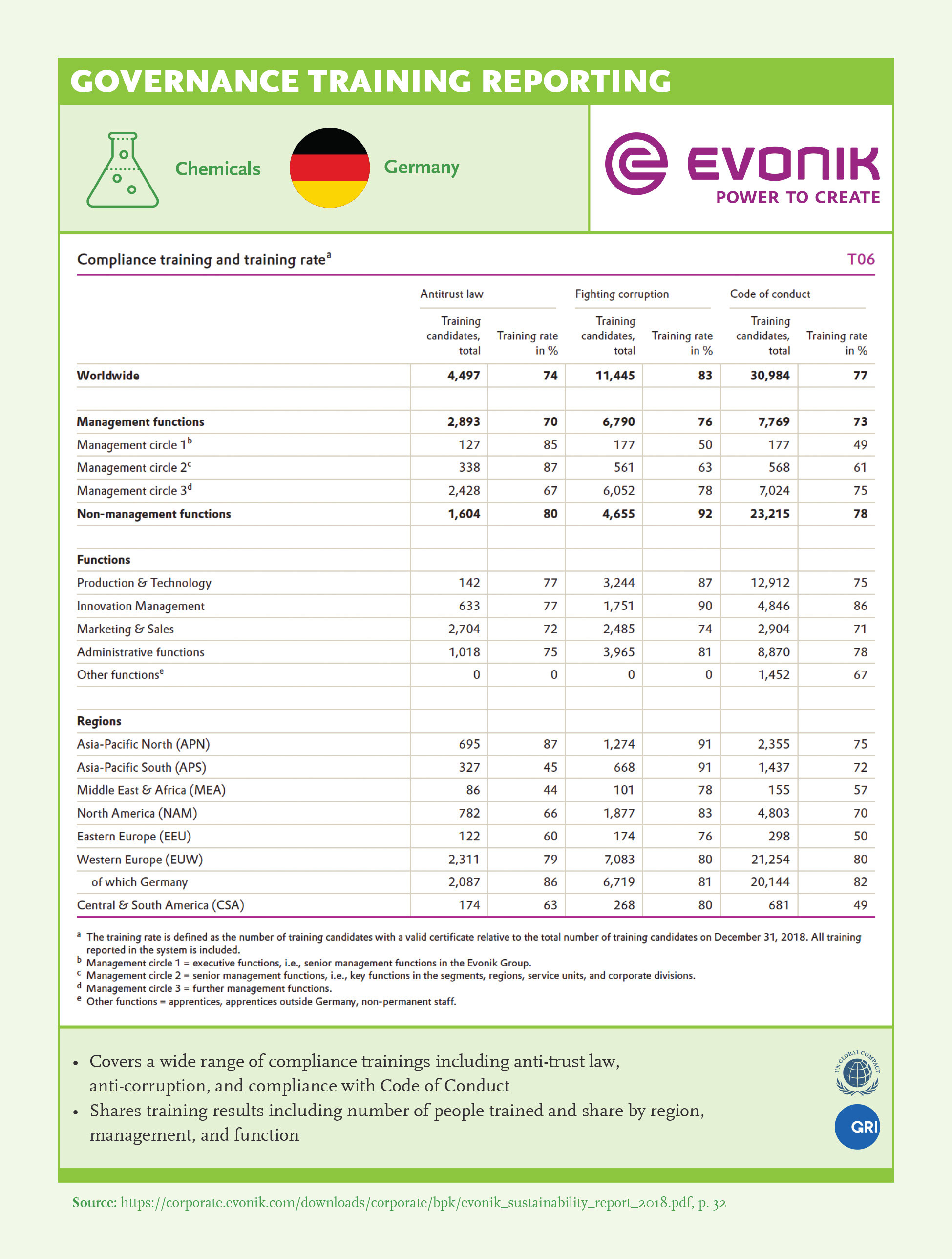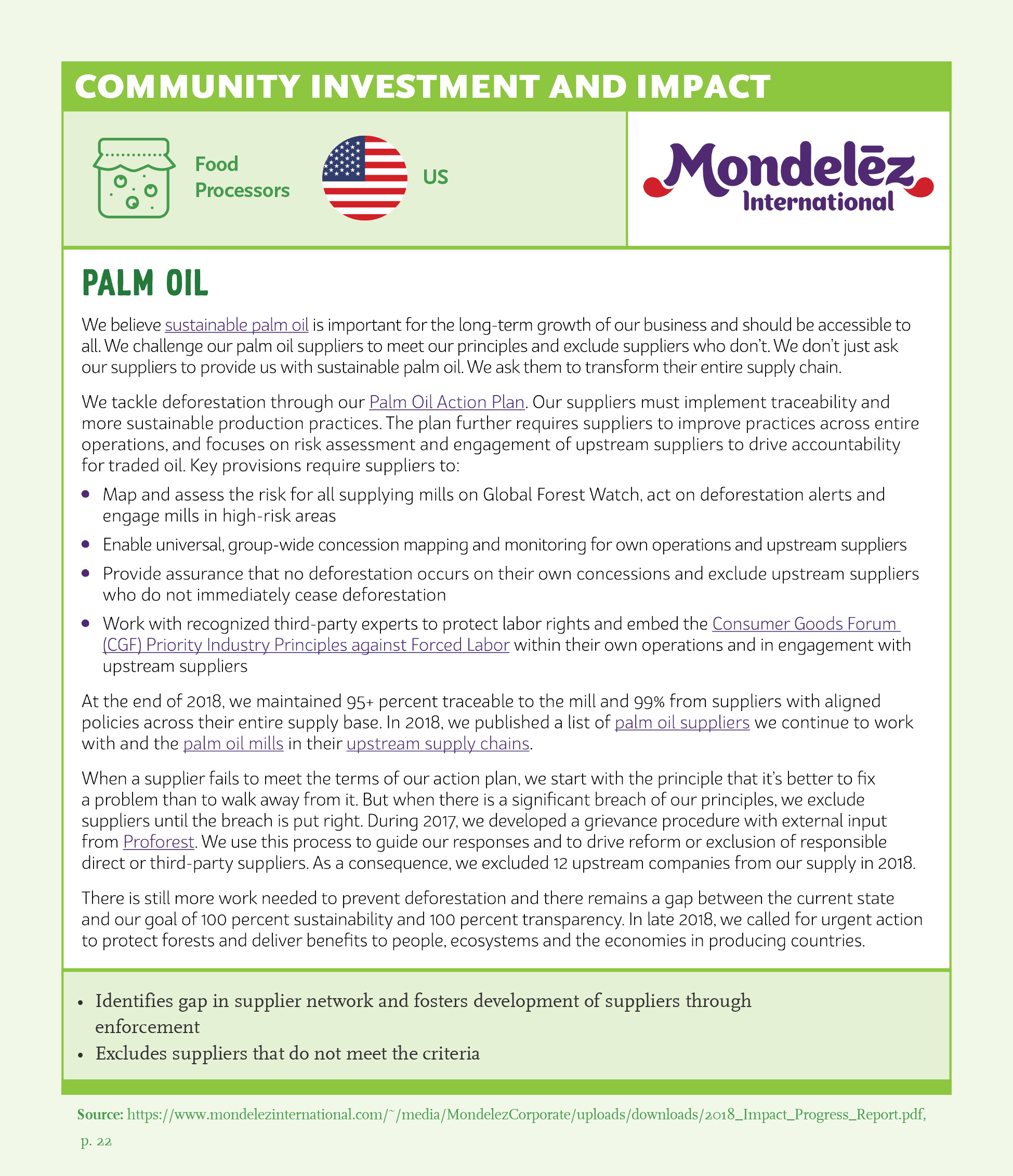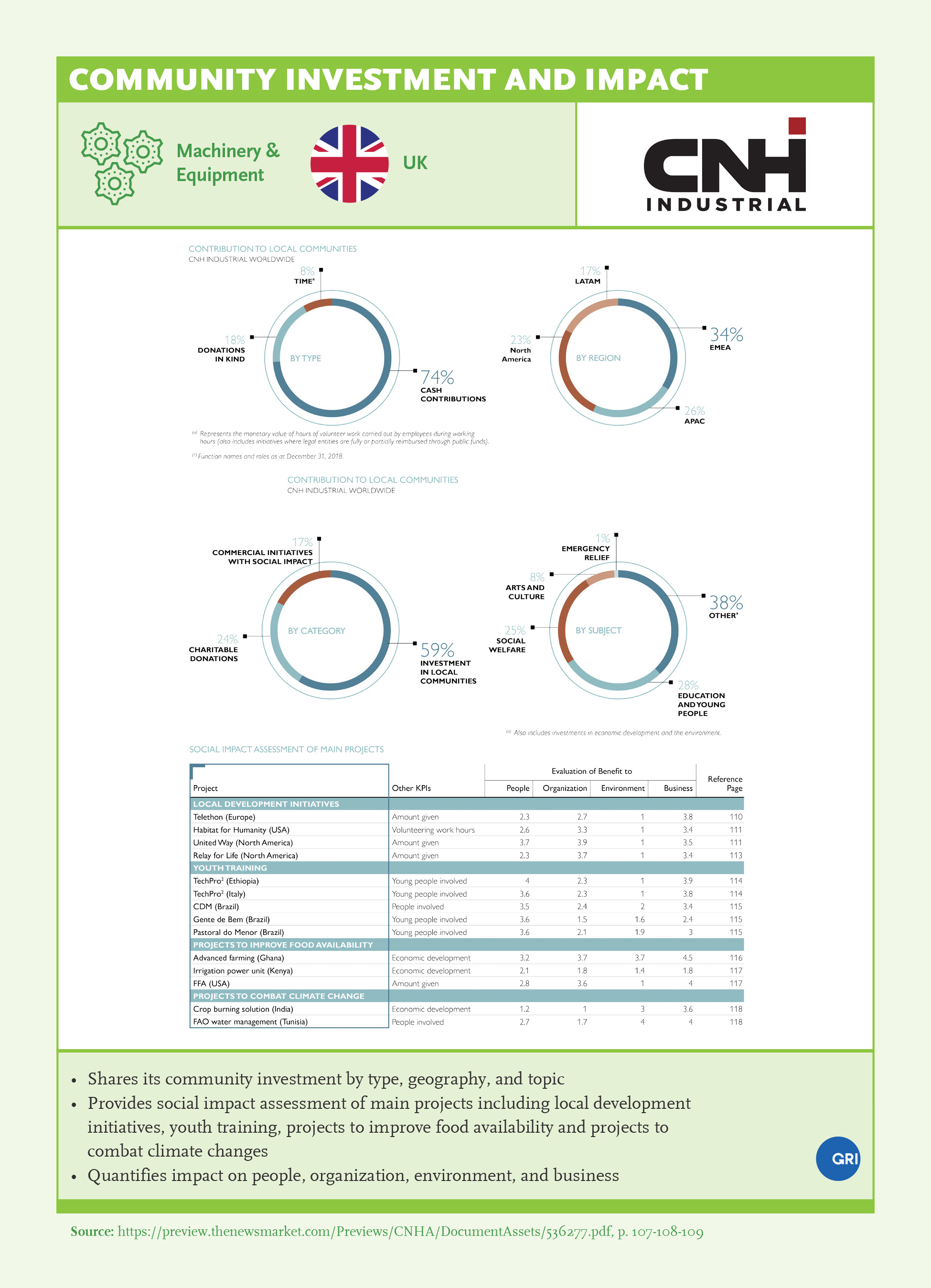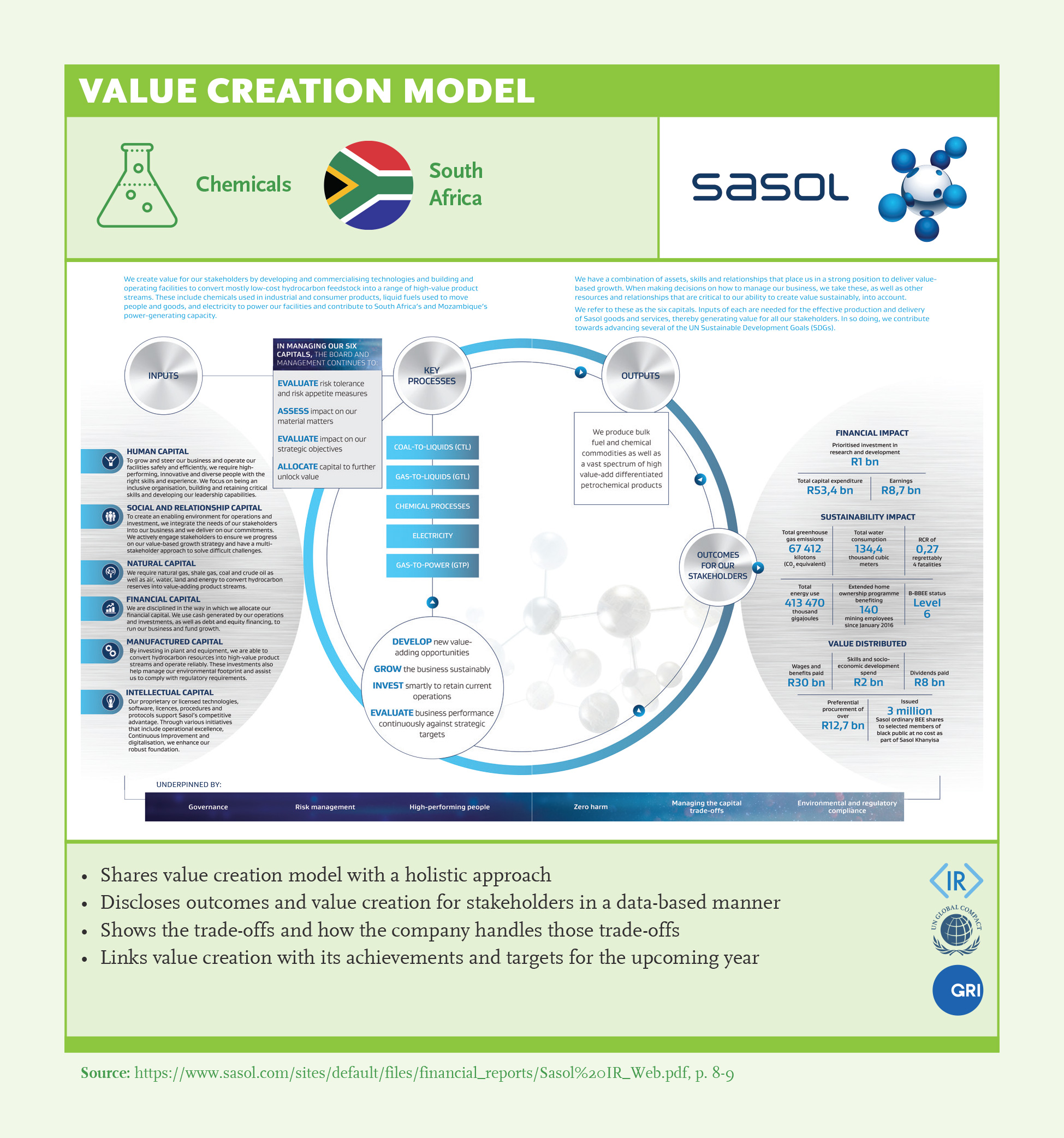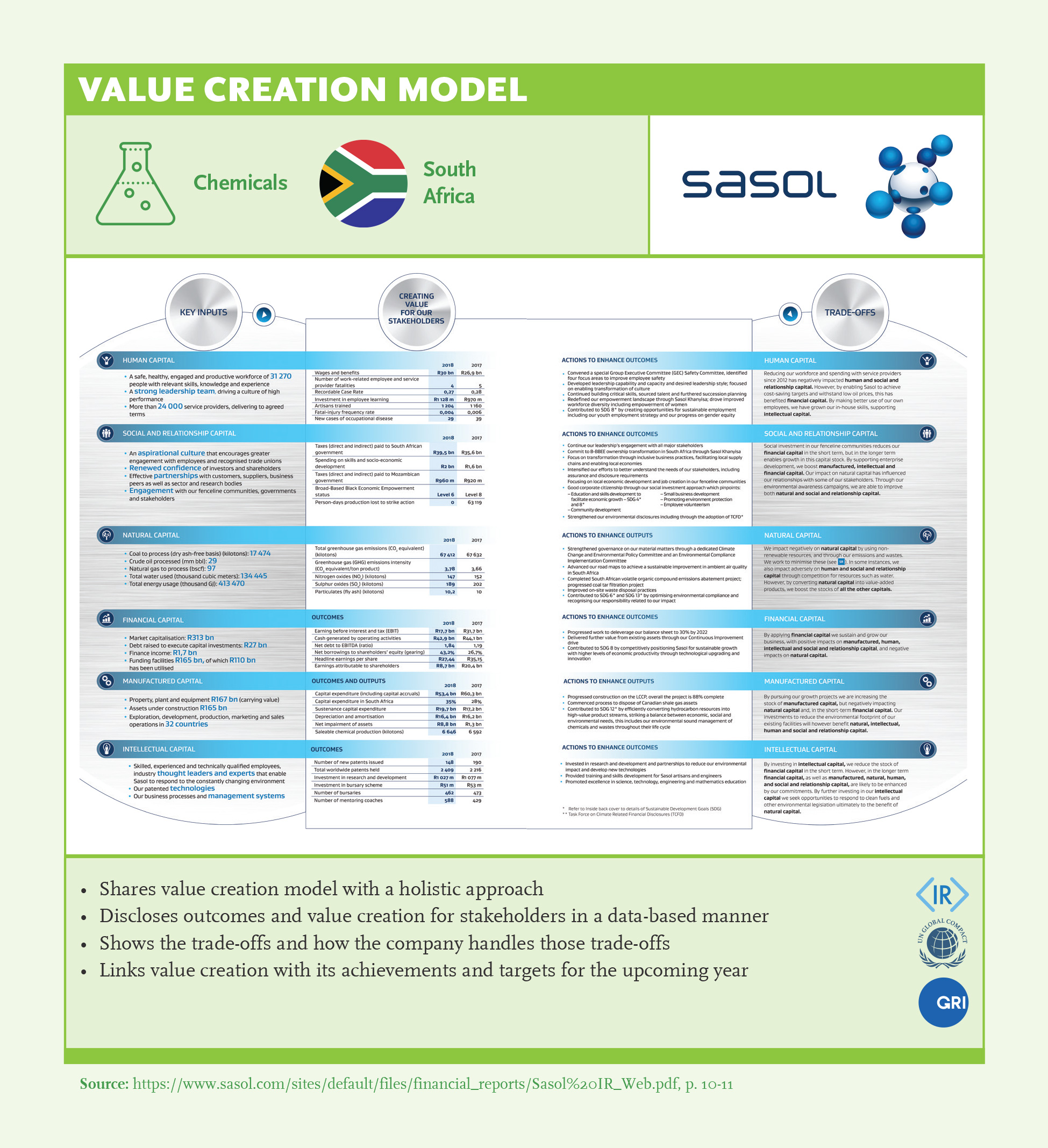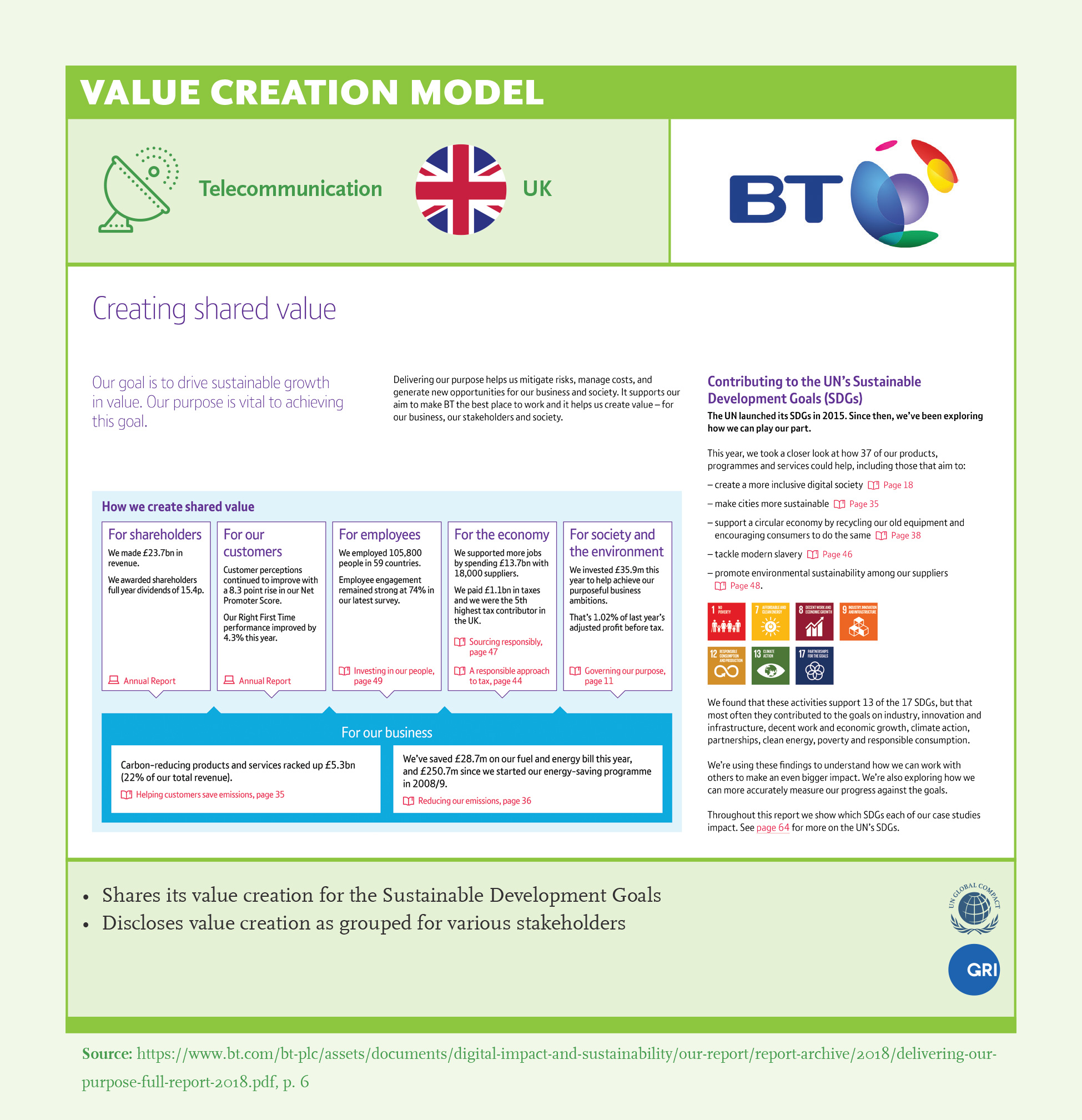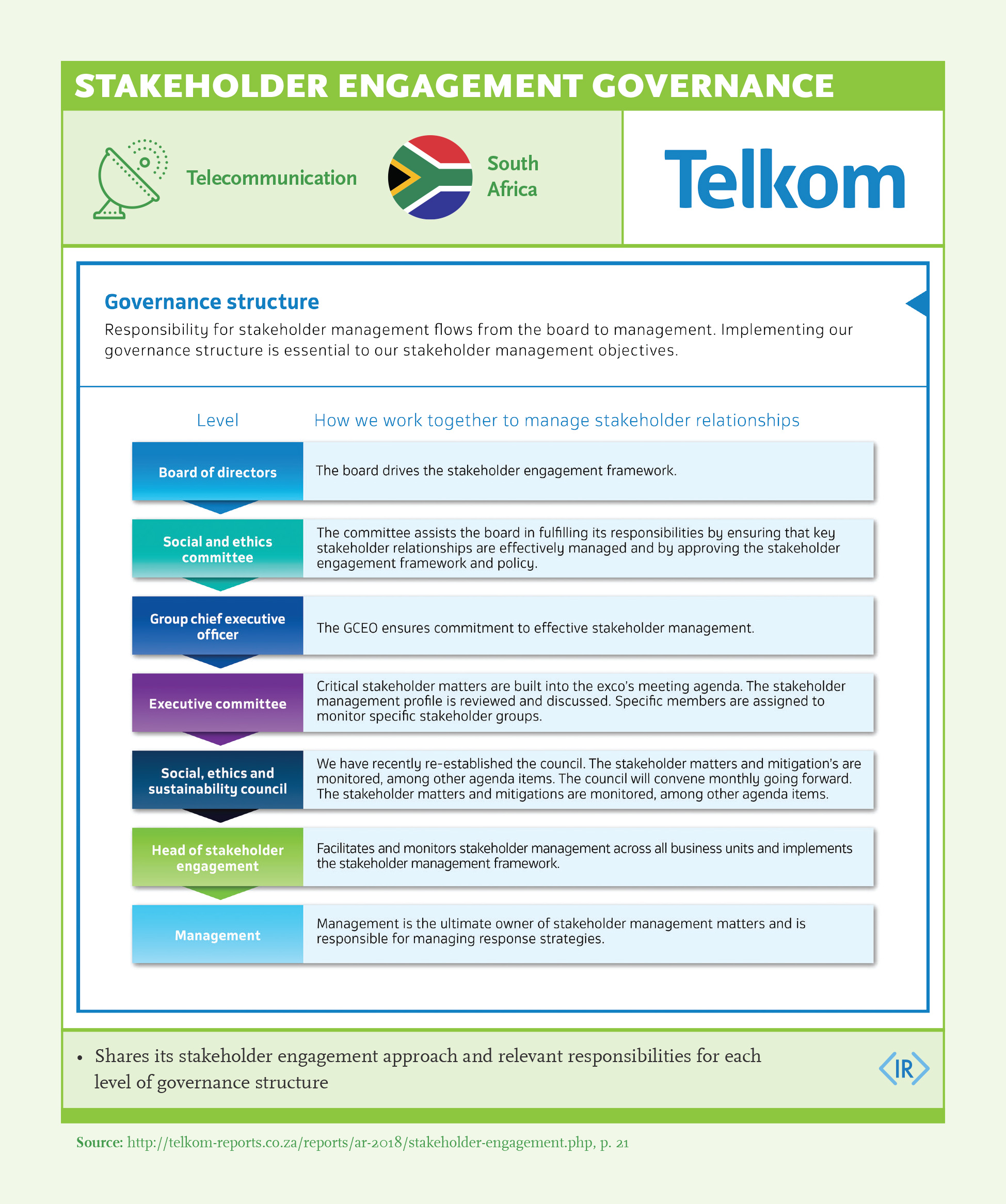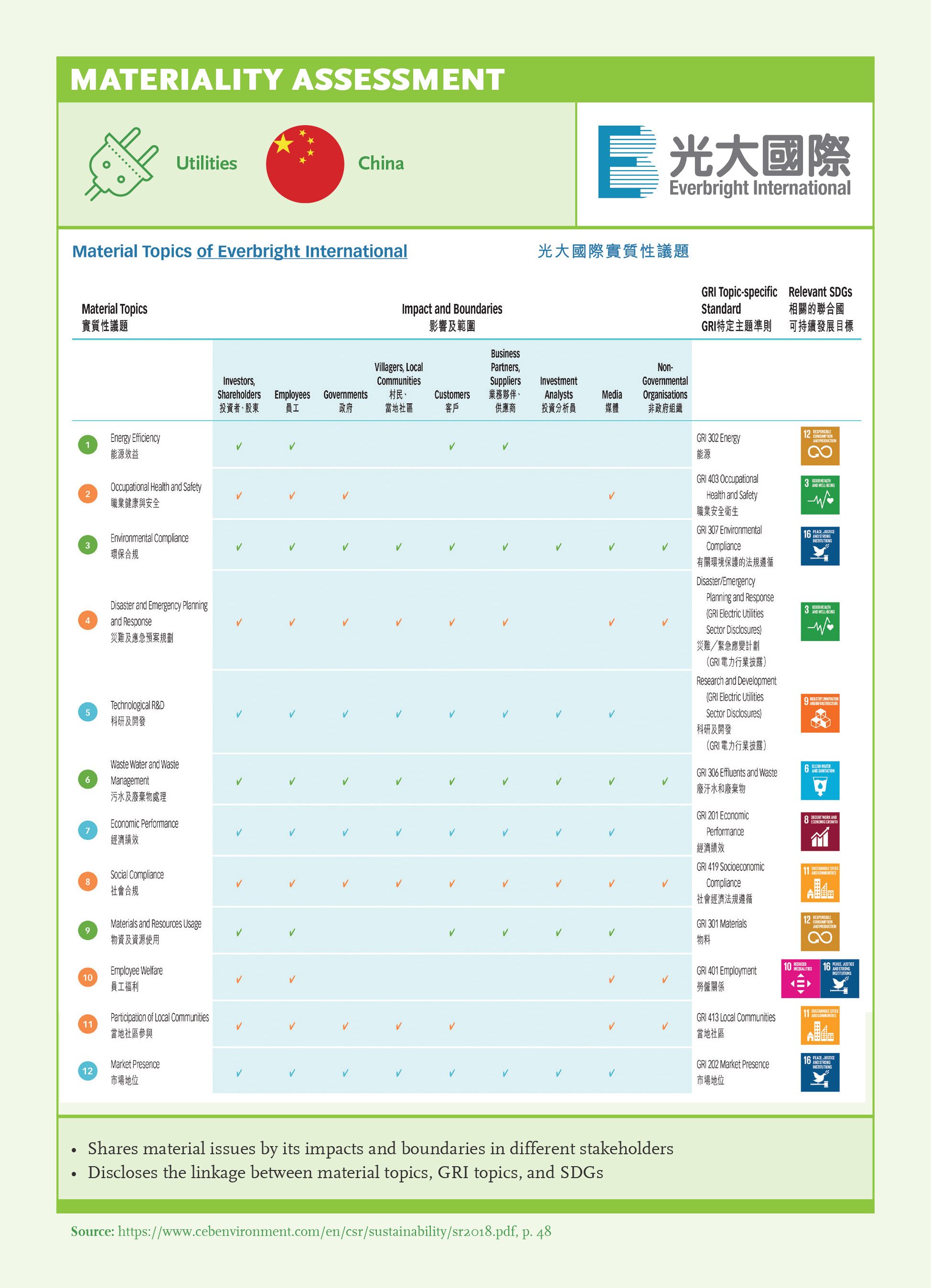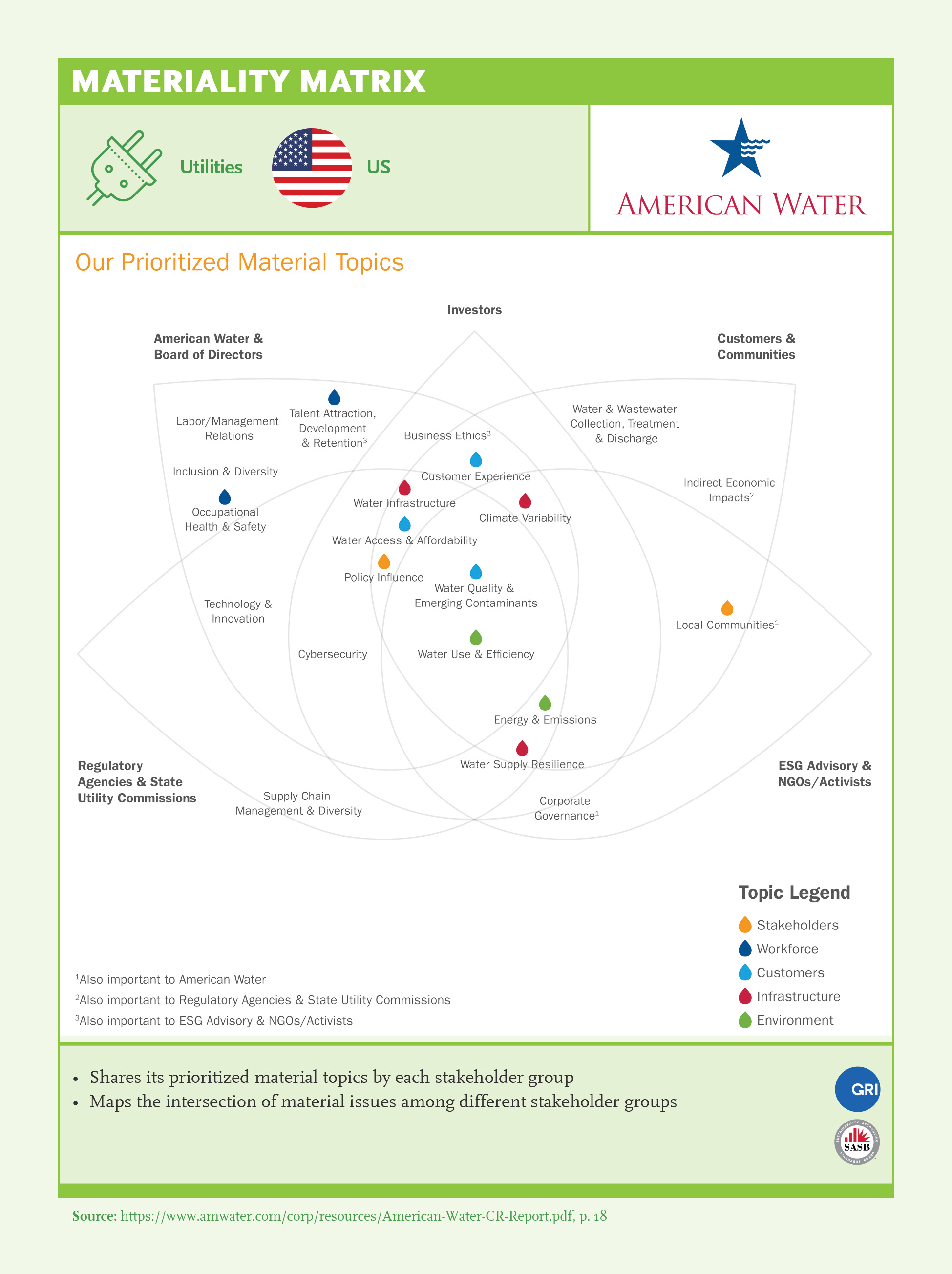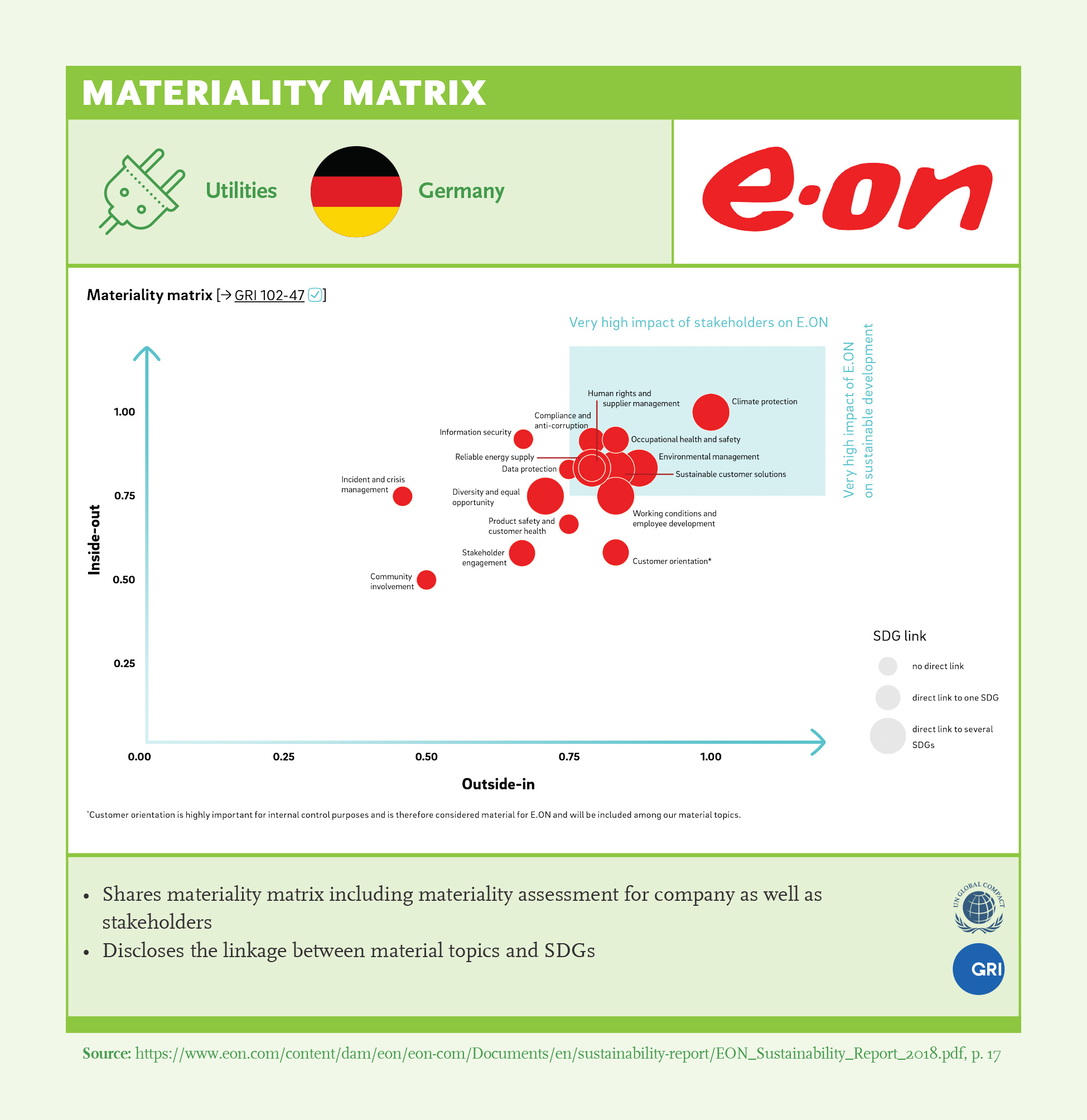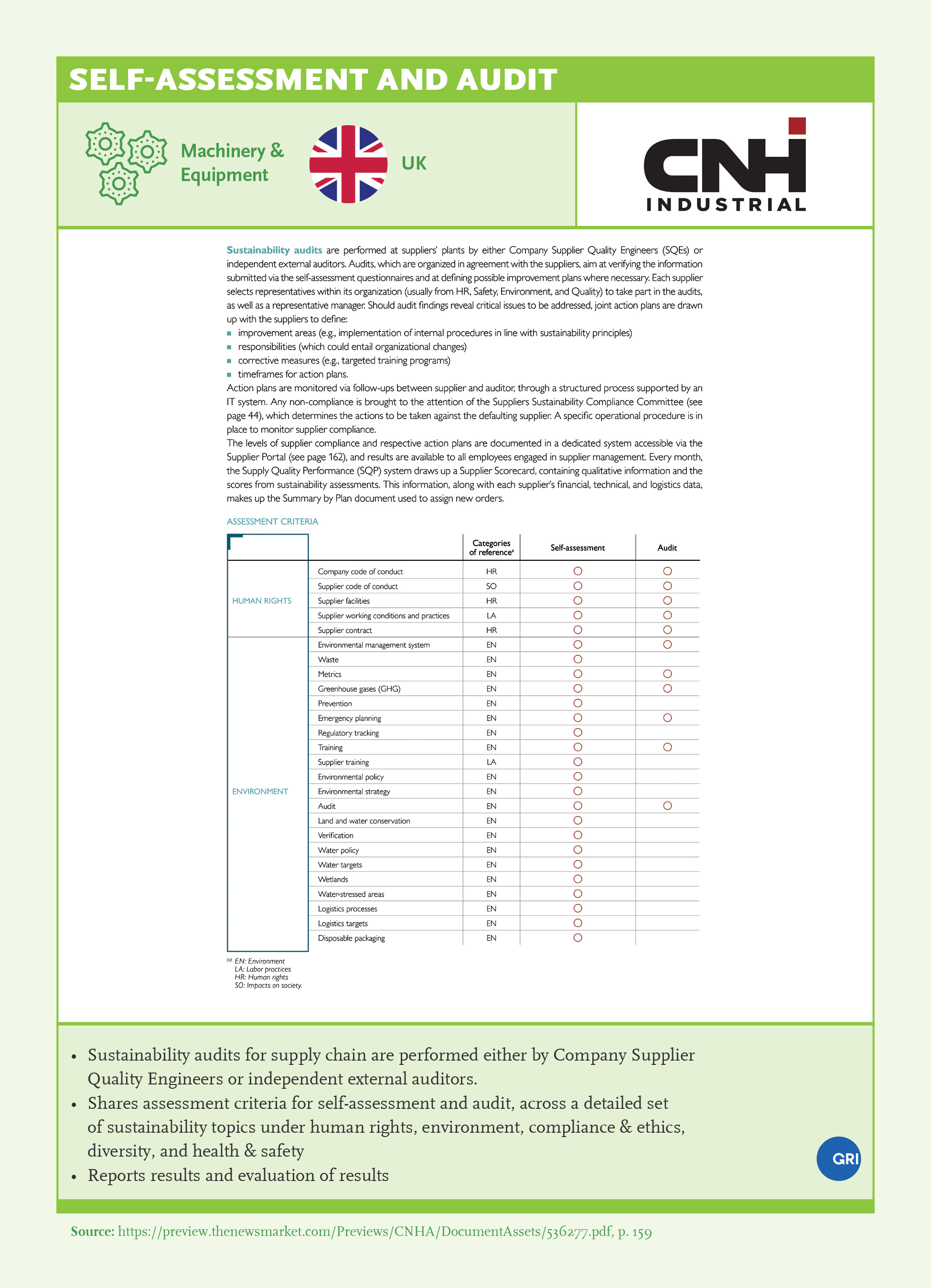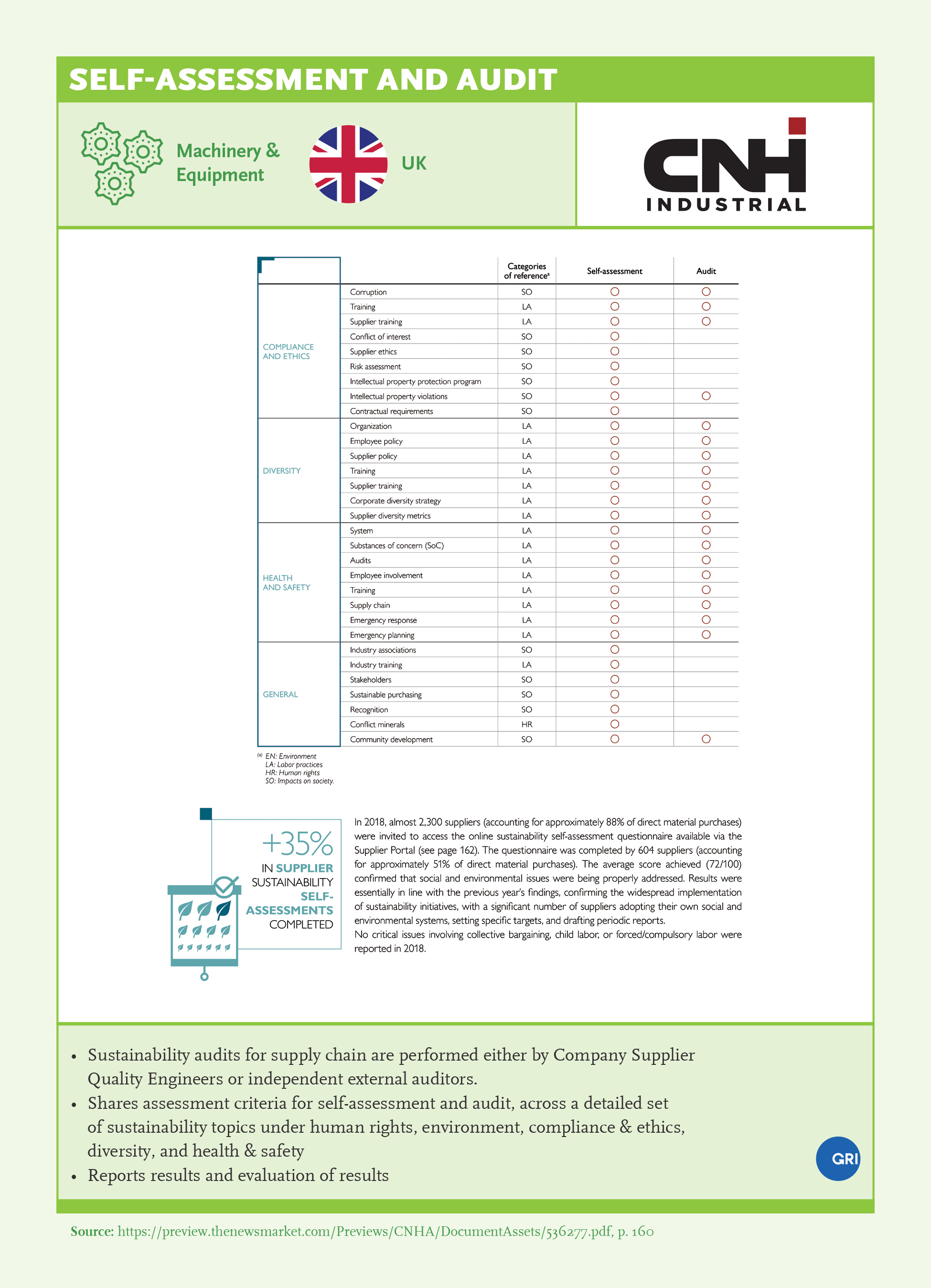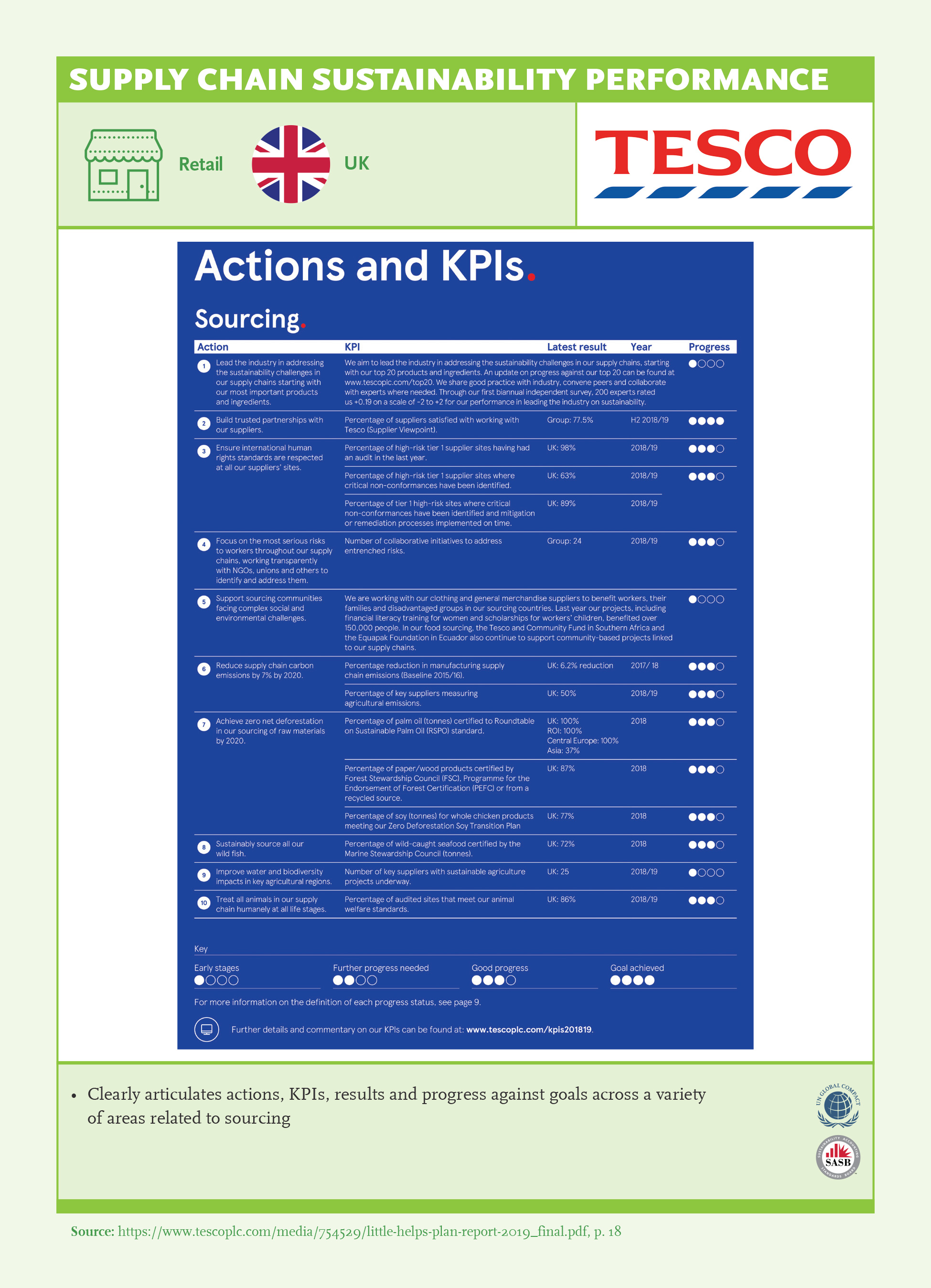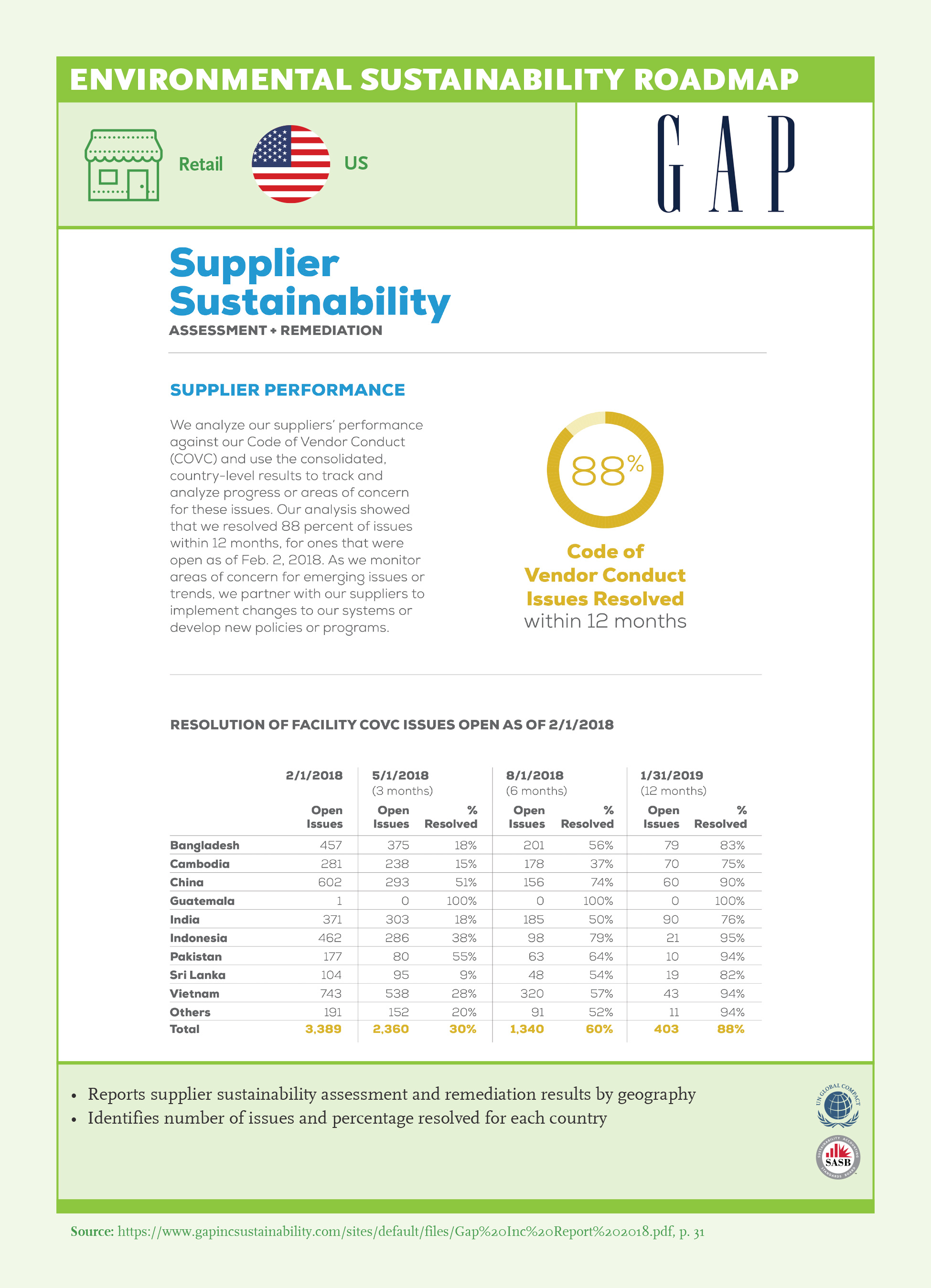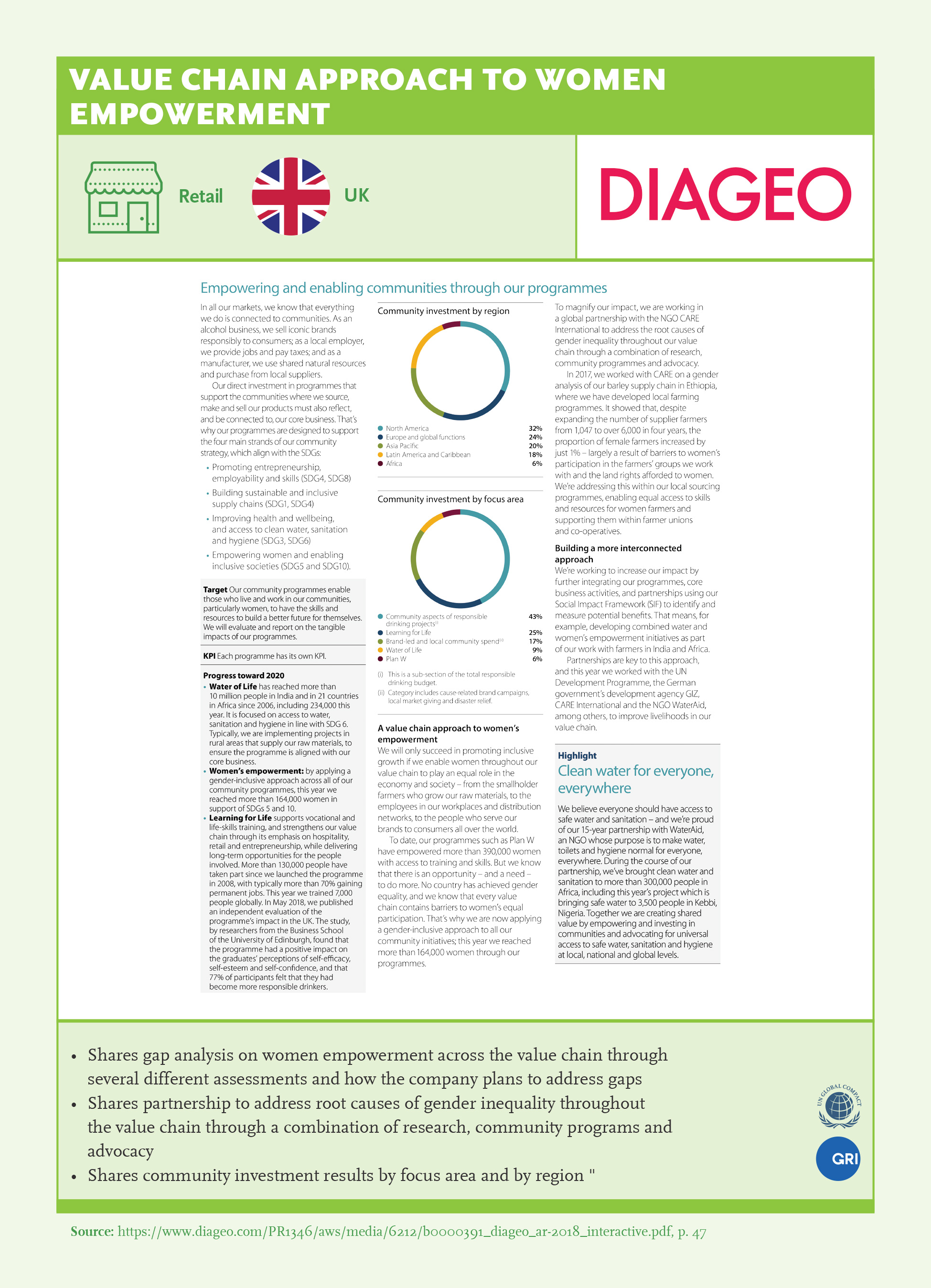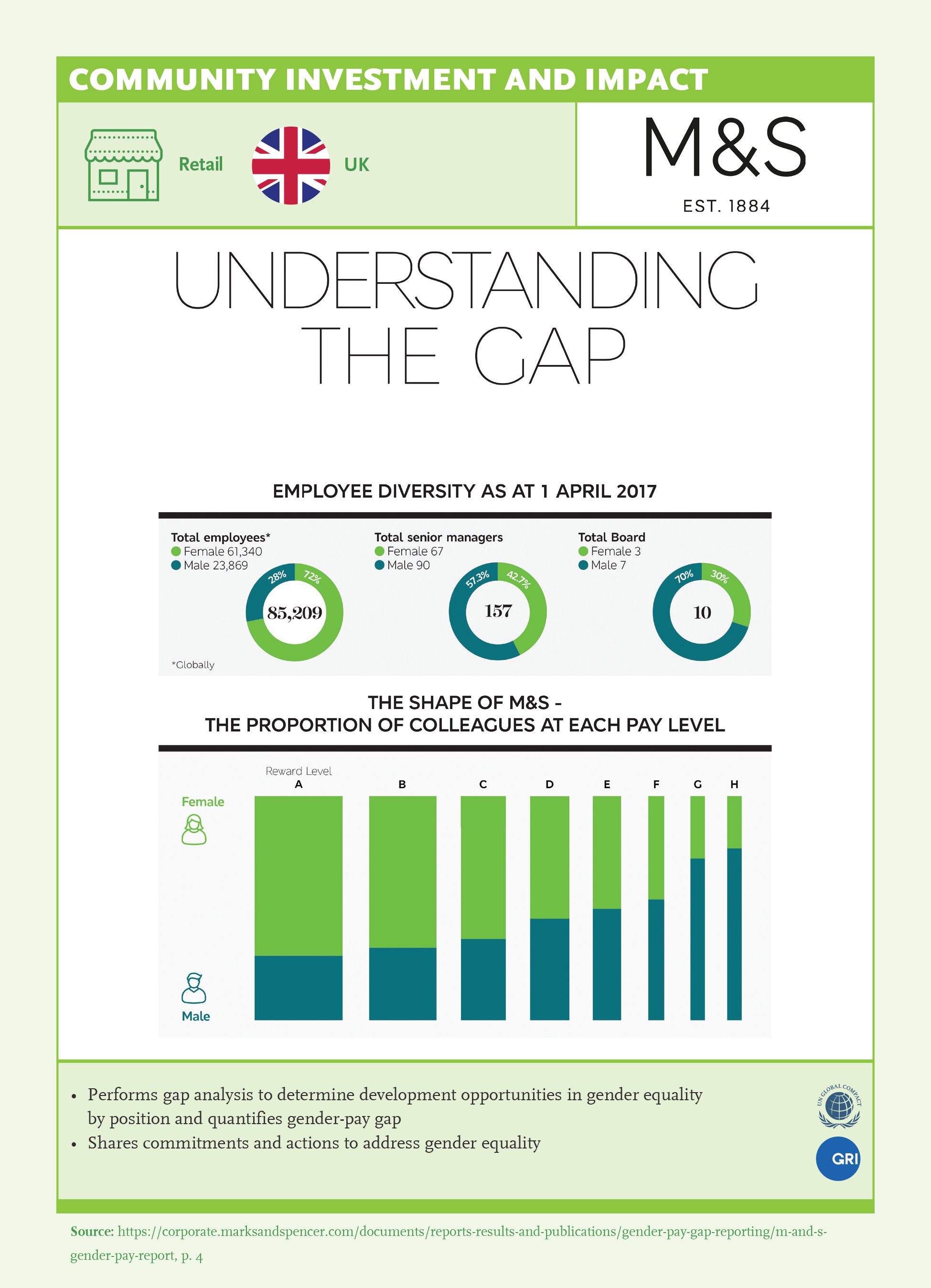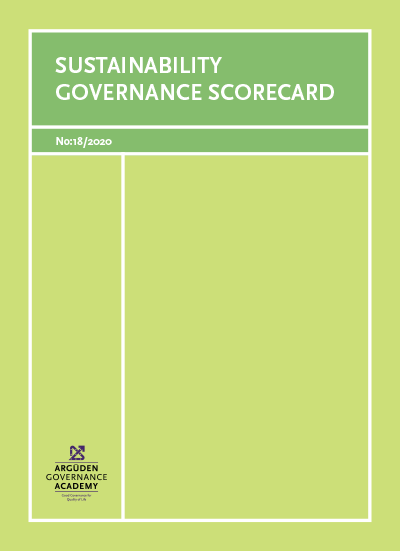Sustainability Journey
Purpose and Value Creation Model
From a stakeholder perspective, articulating a holistic story of how a company creates value for the company, society and the environment and sharing progress of this journey is a strength. For investors, it offers a proxy for management quality; for customers, it allows responsible choice and enhances brand loyalty; for governments; it highlights where to partner for global action; for communities; it allows a company to maintain its social license to operate.
Global Sustainability Leaders integrate sustainability into their core value creation model and lead the way in extending their strategy and management beyond pure financial outcomes, to encompass environmental, social, and governance-related factors that are critical for the future viability of their organizations.
Companies can use Integrated Reporting as a transformative tool for continuously getting better at managing sustainability and stakeholder engagement. At the minimum, this approach enables companies to present linkages between and manage a diverse set of risks that can arise from complex environmental, social and governance related issues. Adopting integrated thinking shifts the mindset into a stakeholder-centric, value-based approach to company operations.
Recommendations
- 1Clearly articulate your purpose and define your sustainability strategy: Best-in class companies identify a corporate purpose that encompasses sustainability goals and build a culture around it. A clear statement of purpose unites executives, directors and investors on the company’s priorities, and creates the link between strategy and capital allocation decisions. To create competitive advantage, more is required than convergence to industry standards – companies must differentiate strategically and develop approaches difficult to imitate.
- 2Visualize a holistic, sustainable value creation model: A value creation model forms the basis of a companies’ vision for long-term value creation.Companies should define tangible and intangible assets as a medium for value creation for both internal and external stakeholders. These capitals can be broadly defined as financial, manufactured, intellectual, human, social & relationship, and natural capital. This requires the company to evaluate the relationship between different functions towards achieving its strategic goals. Companies should also show how inputs link to outputs and outcomes. (Ex: Mr. Price)
- 3Measure and disclose outcomes for external and internal stakeholders: Outcomes should be defined and quantified not just for shareholders but also for relevant external and internal stakeholders. (Ex: Sasol, British Telecom)
- 4Adopt integrated thinking/reporting: Best examples of holistic thinking on value creation are found in companies that embrace Integrated Reporting. Integrated Reporting is a holistic tool to help companies tell the story of how they create value now and in the future. It is also a transparency and communication tool and can form the basis of constructive dialogue with investors as well as other stakeholders.
Key Findings
According to a recent study only 20% of an S&P 500 company’s market value can be explained by its physical and financial assets (down from 83% in 1975) and the remainder comprises intangible factors, such as intellectual capital, human capital, brand and reputation, and relationships with regulatory bodies, non-governmental organizations, customers, suppliers and other external stakeholders. Therefore, sustainability issues that may have an impact on these intangible areas pose a significant risk for the value of a company.
At the minimum, this approach enables companies to present linkages between and manage a diverse set of risks that can arise from complex environmental, social and governance related issues. Some companies go further and take on a leadership role to prove that “Doing good is good business” by putting sustainability at the core of their value proposition. These leaders have come to realize that, if sustainability issues are becoming relevant for large numbers of people throughout the world, addressing them properly would be a good business case for satisfying a global need.
- 70% of GSL share business model and visualize the company value creation process.
- 70% of GSL link financial resources to business model, 55% link to HR, <50% link to manufactured, natural, relationship and intellectual capital.

- All companies in South Africa share their value creation model. There is room for improvement for US (61%), Germany (55%) and Türkiye (42%).
- IR provides a solid framework on how sustainability can be approached holistically and communicated to different stakeholders through a unifying model: 92% of companies that have Integrated Reporting share their value creation model and 78% identify all 6 dimensions of value as part of value creation model, whereas <75% of companies from all other standards share their value creation model, <40% identify all 6 dimensions of value.

- All companies quantify outcomes for shareholders and 73% of companies quantify outcomes for supply chain.
- <70% of companies quantify outcomes for customers, employees, environment and community.
Best Practice Examples
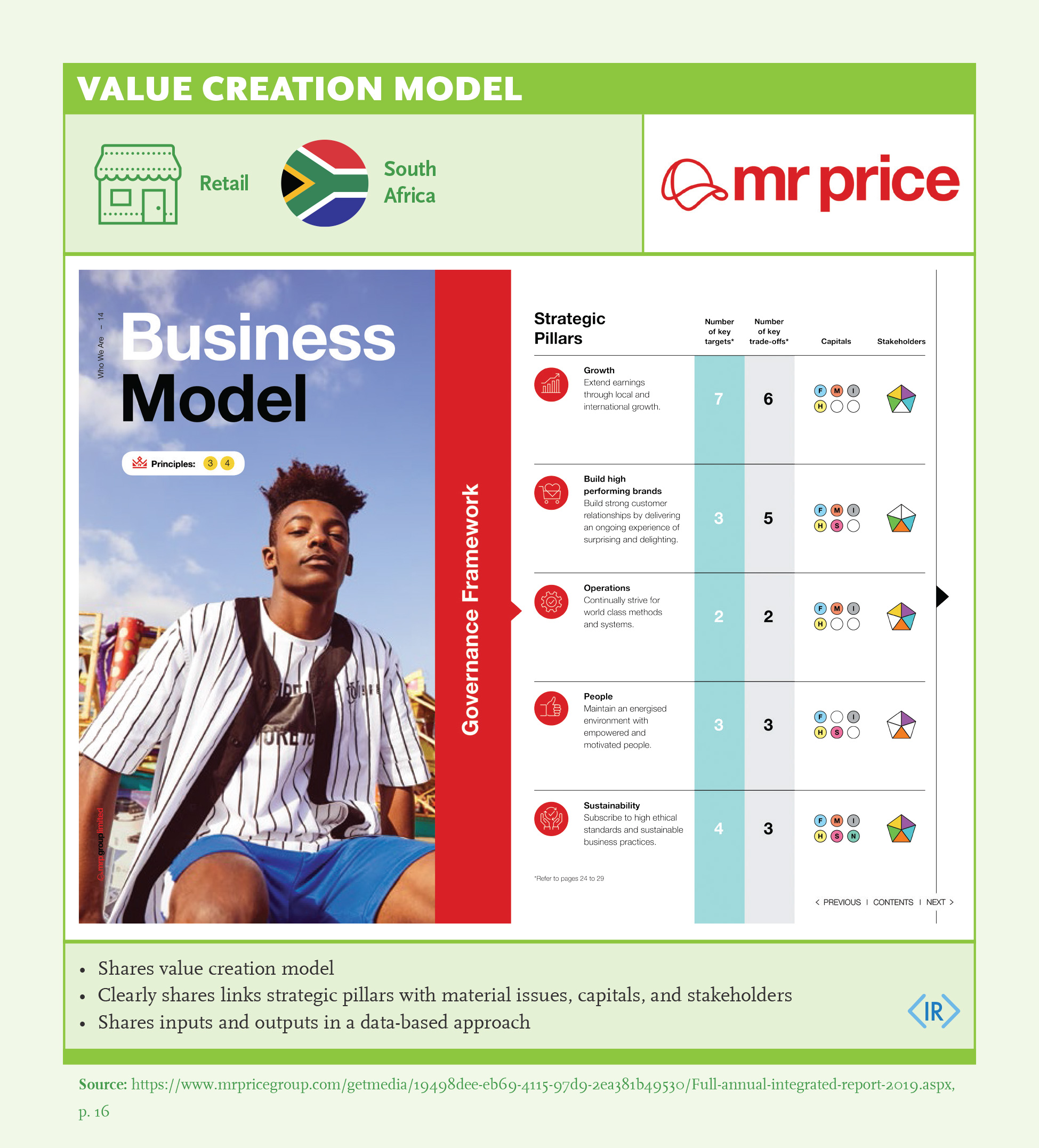
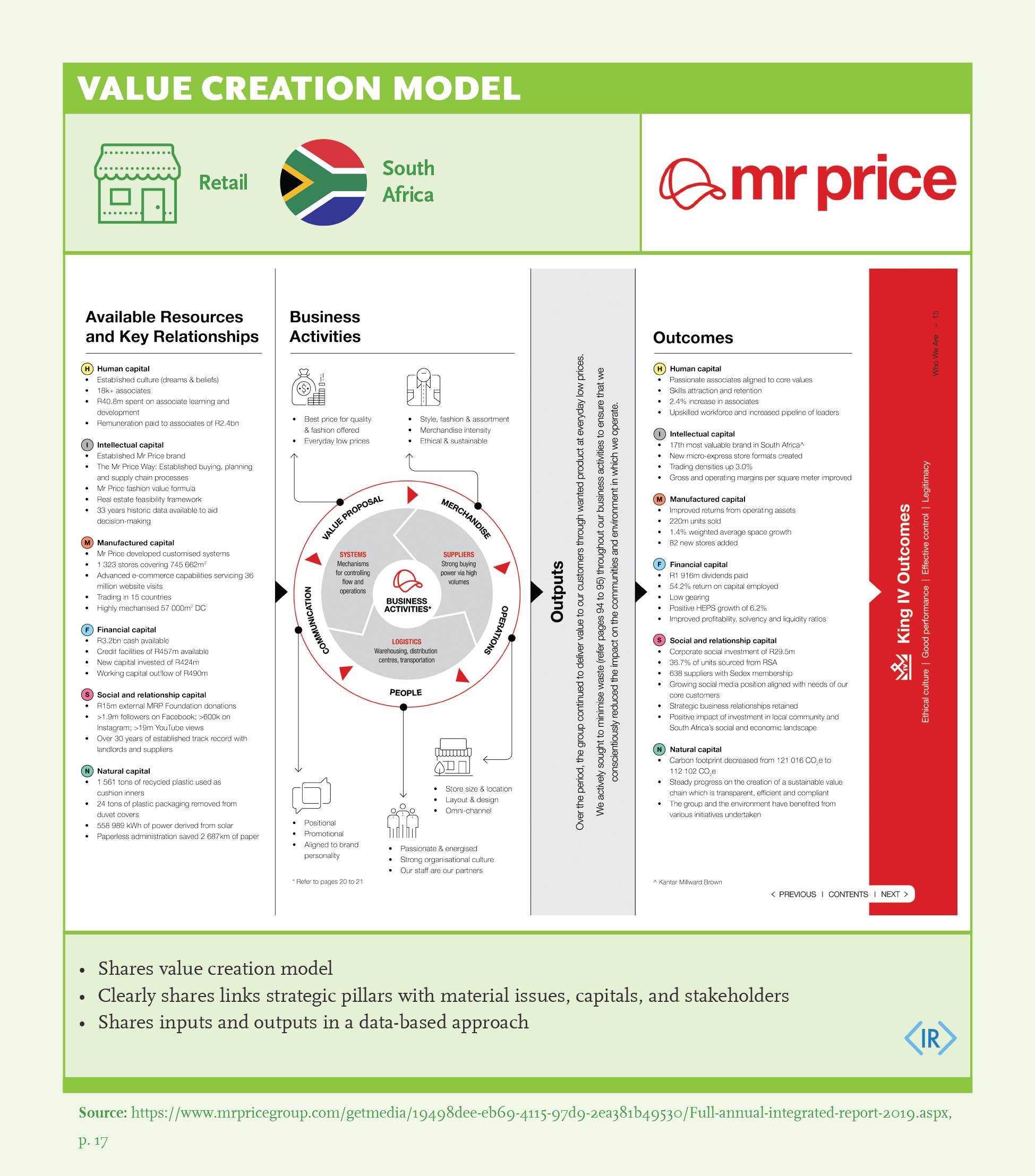
Stakeholder Engagement and Materiality
The success of a company depends on its relationships with the external world, not just customers and investors, but also employees, regulators, politicians, activities, NGOs, the environment, and technology. Good governance covers all stakeholders to achieve balance between risk/reward, short/long-term, stakeholder goals, motivate/ audit management.
Stakeholder engagement is a critical process that helps companies understand their key environmental and social impacts and identify sustainability risks and opportunities. For this process to be effective, there should be open communication, with an intent on understanding concerns and creating dialogue for establishing trust-based relationships. Best-in-class companies adopt a long-term, comprehensive view of their stakeholders to encompass external stakeholders and clearly articulate how the fulfillment of their purpose benefits society to foster dialogue.
Materiality analysis not only allows the company to prioritize their sustainability efforts by considering the ESG issues most related to its business, but also to inform sustainability reporting and communication with stakeholders. Issues material to performance constantly evolve, so ongoing analysis and dialogue with stakeholders is essential for companies to focus of their sustainability efforts on what matters for their performance and their stakeholders in the short and long-term horizon.
Recommendations
- 1Define and engage your stakeholders: Best-in-class companies identify a comprehensive set of internal and external stakeholders and prioritize engagement based on the importance of the stakeholder for long-term value creation. Companies should deploy a variety of stakeholder engagement methods to create dialogue including one-on-one meetings and participatory tools such as focus groups to understand the stakeholders needs and co-create solutions. (Ex: Hershey’s)
- 2Define material issues for each stakeholder group and how to address them: Be transparent on which topics you engage on, and how you plan to address them. (Ex: Marks & Spencer)
- 3Define governance structure to support stakeholder engagement: Companies should define responsibilities, process, and information flow for stakeholder dialogue and prioritization of material issues. The boards need to understand the key issues raised by the stakeholder engagement process and how the management plans to address them. Furthermore, the board needs to have a process to evaluate the management’s sustainability plans to address the key issues. (Ex: Telkom)
- 4Define and prioritize material ESG topics for company and its stakeholders: Companies should define material ESG topics including risks and value creation opportunities for the company and ensure the board is involved in setting materiality thresholds. (Ex: General Mills) Reporting standards such as SASB and GRI can be used to identify a comprehensive list of material issues. Materiality is a function of time and audience – best practices adopt an expanded view of time to encompass long-term sustainability objectives as well as define material issues for their value chain and stakeholders. (Ex: China Everbright) Prioritizing material issues also requires the company to evaluate its ability to influence the issue. (Ex: AstraZeneca)
- 5Publish a materiality matrix: A materiality matrix provides information on the most material ESG issues for a company and forms the basis of prioritization. Best-in-class companies disclose a materiality matrix that includes an assessment of materiality for the company and its stakeholders, the size of potential impact, and link with SDGs. (Ex: American Water Works, E.On)
- 6Use reporting as a tool for transparency on communicating with stakeholders on what matters: Corporate reporting is a communication tool for a wide range of stakeholders. Reporting should be precise, reader friendly and provide the opportunity to assess the value created by the company. It should identify material issues relevant for different stakeholders so that it can form the basis of constructive dialogue and stakeholder engagement. Companies should clearly disclose the process for selecting material issues and boards role in the process.
Stakeholder Engagement
Stakeholder engagement is a critical process that helps companies understand their key environmental and social impacts and identify sustainability risks and opportunities. For this process to be effective, there should be open communication, with an intent on understanding concerns and creating dialogue for establishing trust-based relationships. Best-in-class companies adopt a long-term, comprehensive view of their stakeholders to encompass external stakeholders and clearly articulate how the fulfillment of their purpose benefits society to foster dialogue.
In order to gain and retain the trust of stakeholders the most important issue is to have the right attitude. The yardstick should be the ethic of reciprocity or the golden rule that is prevalent in most religions and philosophers’ writings summarized as “Do unto others as you would have them do unto you.”
Key Findings
Stakeholder Engagement Scope

- 89% of the companies in our sample share a stakeholder map and 79% share objectives for each stakeholder group.
- Very few include public/media (42%) and the environment (26%) in their list of stakeholders.
- All companies in Consumer Goods, Natural Resources, Telecom and Utilities share a stakeholder map and almost all share objectives.
- <80% of Machine & Equipment and Automotive companies share a stakeholder map and <60% share objectives for stakeholders.
Stakeholder Engagement Process
An adequate stakeholder engagement process is a multi-step, continuous process. First, the company needs to prepare a map of its key stakeholders for the issue at hand. What matters here is to adopt a comprehensive view of stakeholders to include all relevant communities and the environment. Then, the company needs to define the stakeholder engagement scope, which determines the issues of engagement (environmental, social, economic).
It is important that companies focus on issues which are most relevant to the firm’s core value proposition, in order to mobilize resources for a step-change in selected areas.
The engagement model should be defined based on stakeholder requirements and can cover several models including communication, consultation, participation on partnership. Tools of engagement may include interviews, workshops, focus groups, town-hall meetings, stakeholder perception surveys, stakeholder panels and joint decision-making.

- 84% share stakeholder engagement process: Engagement is primarily done through one-on-one or public meetings (80%, 78%).
- There is a lower share in participatory tools (higher engagement) – such as focus groups (36%), workshops (60%) and participatory tools (65%).
Materiality
Material matters are broadly defined, as per GRI guidelines, as issues that have impact on an organization’s ability to create, preserve or erode economic, environmental, and social value for itself, its stakeholders and society at large. Investors are increasingly looking for evidence that their portfolio companies are focused on the material ESG issues that matter to financial performance and a well-defined commitment to sustainability.
Best-in-class companies use materiality analysis to gather insight on the relative importance of environmental, social, and governance issues and prioritize sustainability efforts around where they can have the greatest impact.
Materiality analysis not only allows the company to prioritize their sustainability efforts by considering the ESG issues most related to its business, but also to inform sustainability reporting and communication with stakeholders. Issues material to performance constantly evolve, so ongoing analysis and dialogue with stakeholders is essential for companies to focus their sustainability efforts on what matters for their performance and their stakeholders in the short and long-term horizon.

- 80% share list of material ESG issues and 78% share process for selecting material issues. >90% share material issues and process for selecting materiality issues in Consumer Goods, Natural Resources and Telecommunication companies.
- 69% share assessment of material issues for the company (prioritization), but only 54% share assessment of material issues for stakeholders.
- Only half of the companies in our sample share a materiality matrix. Highest share of materiality matrix in Telecom (77%) and Chemicals (74%), lowest in Automotive, Machinery & Equipment and Pharma (36%, 33%, 31%).
Best Practice Examples
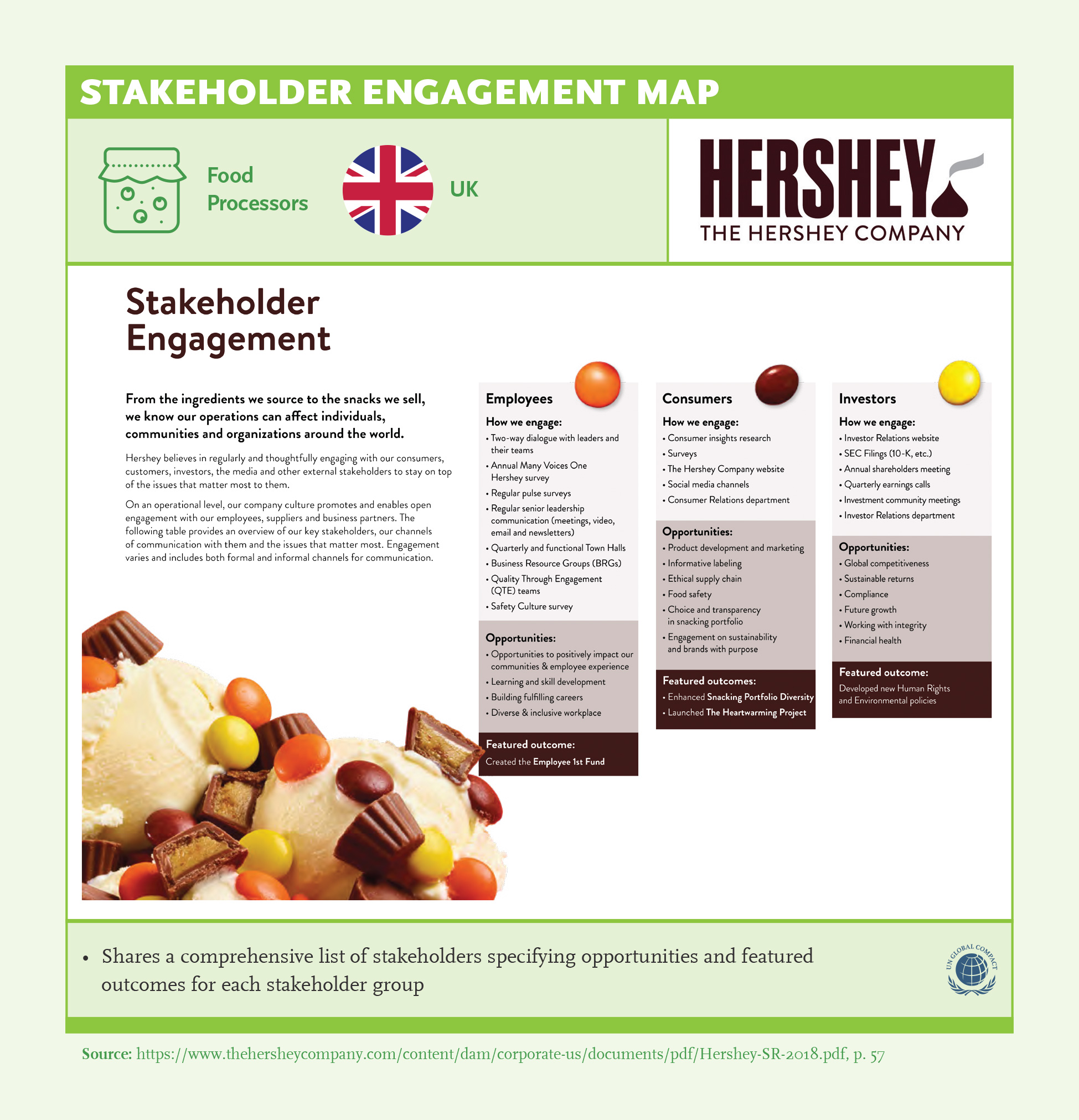
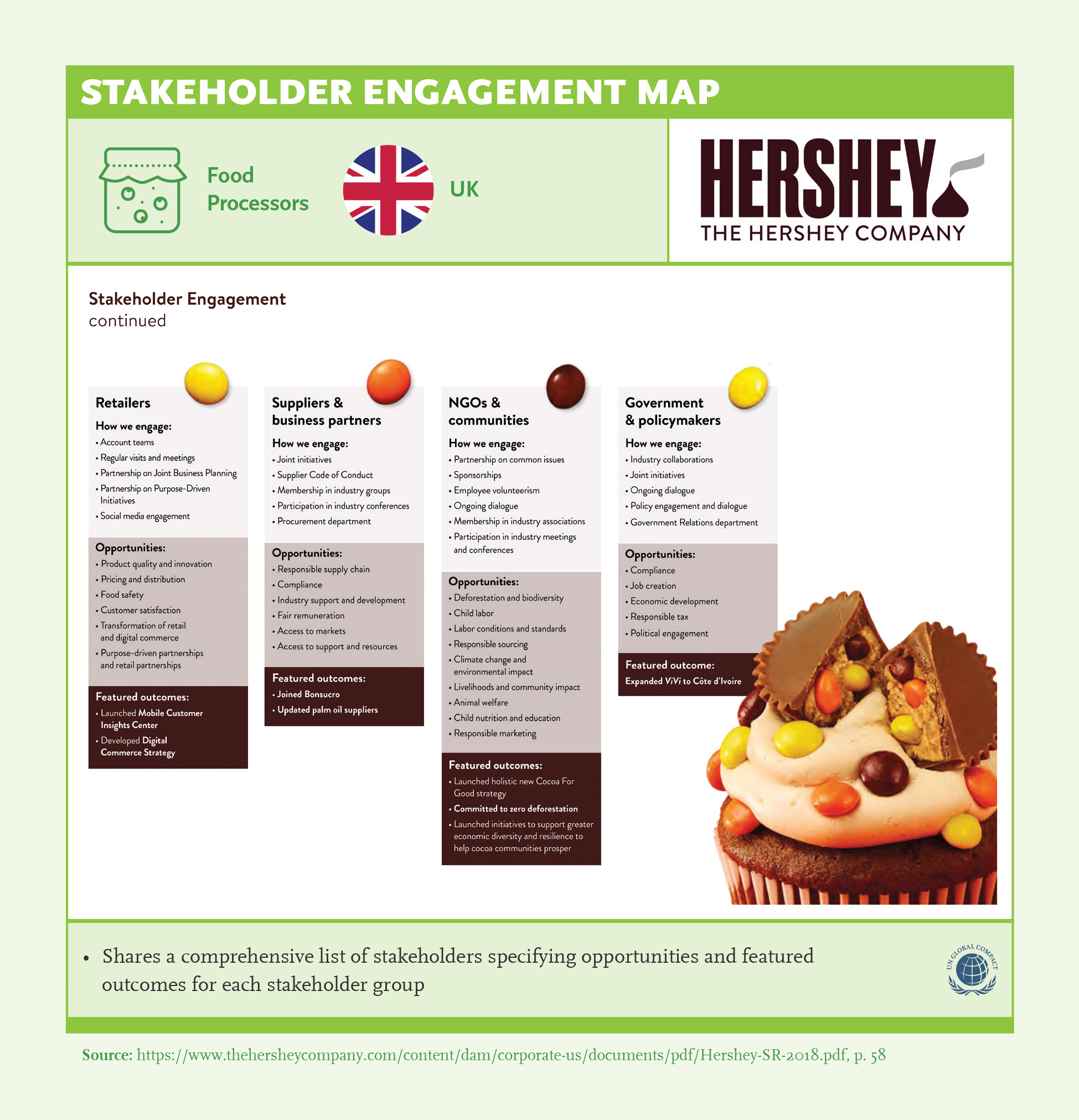
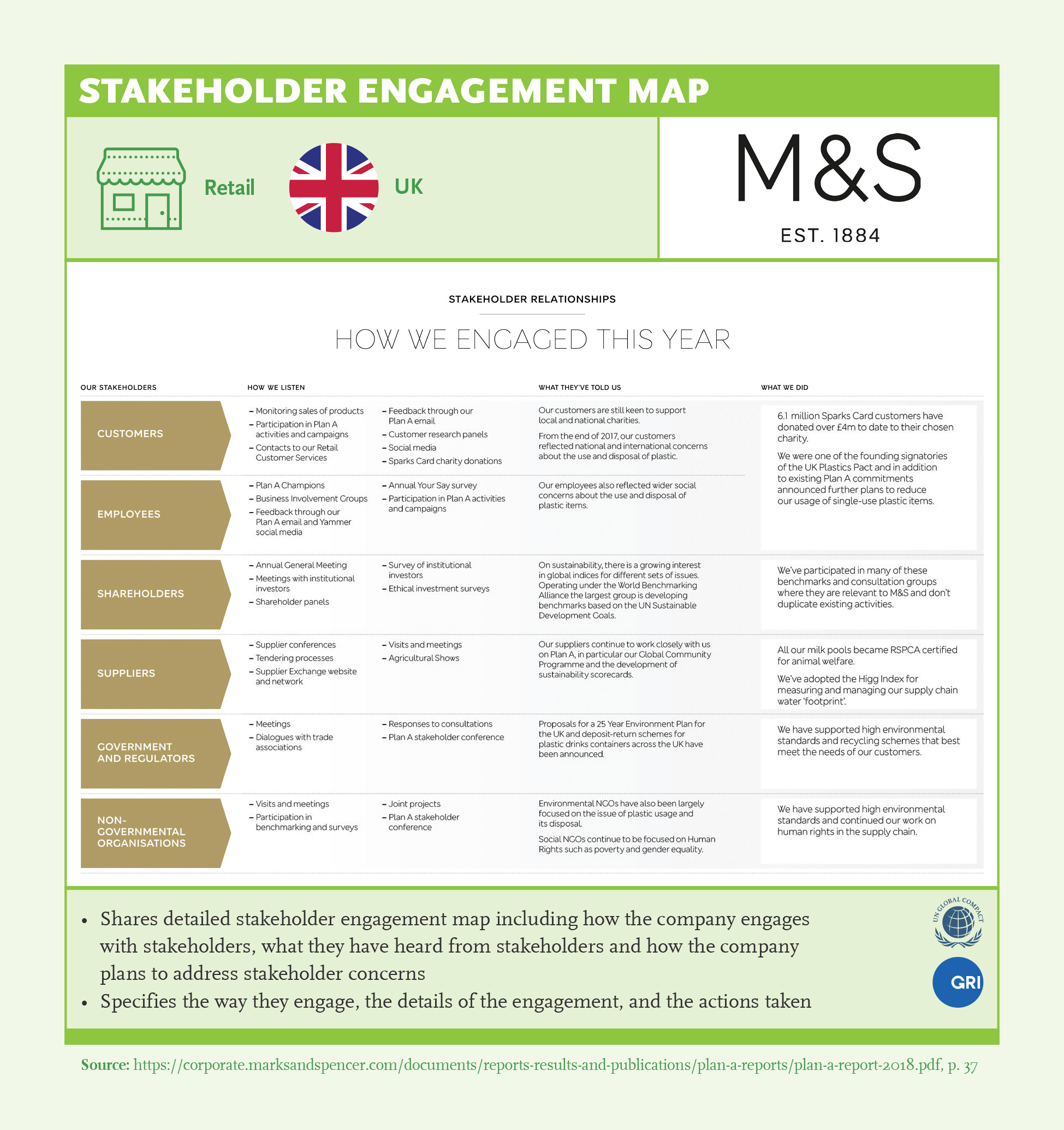
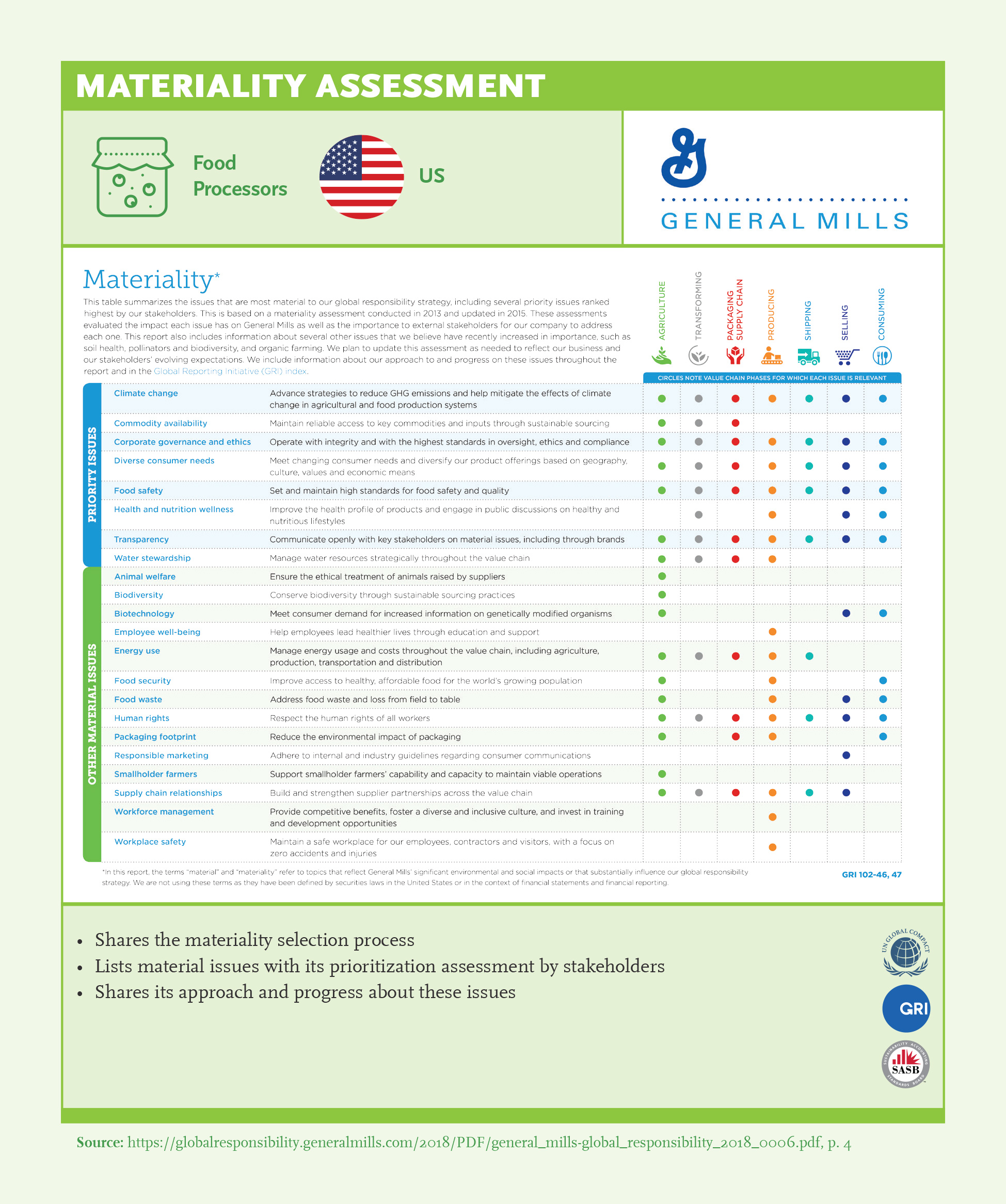
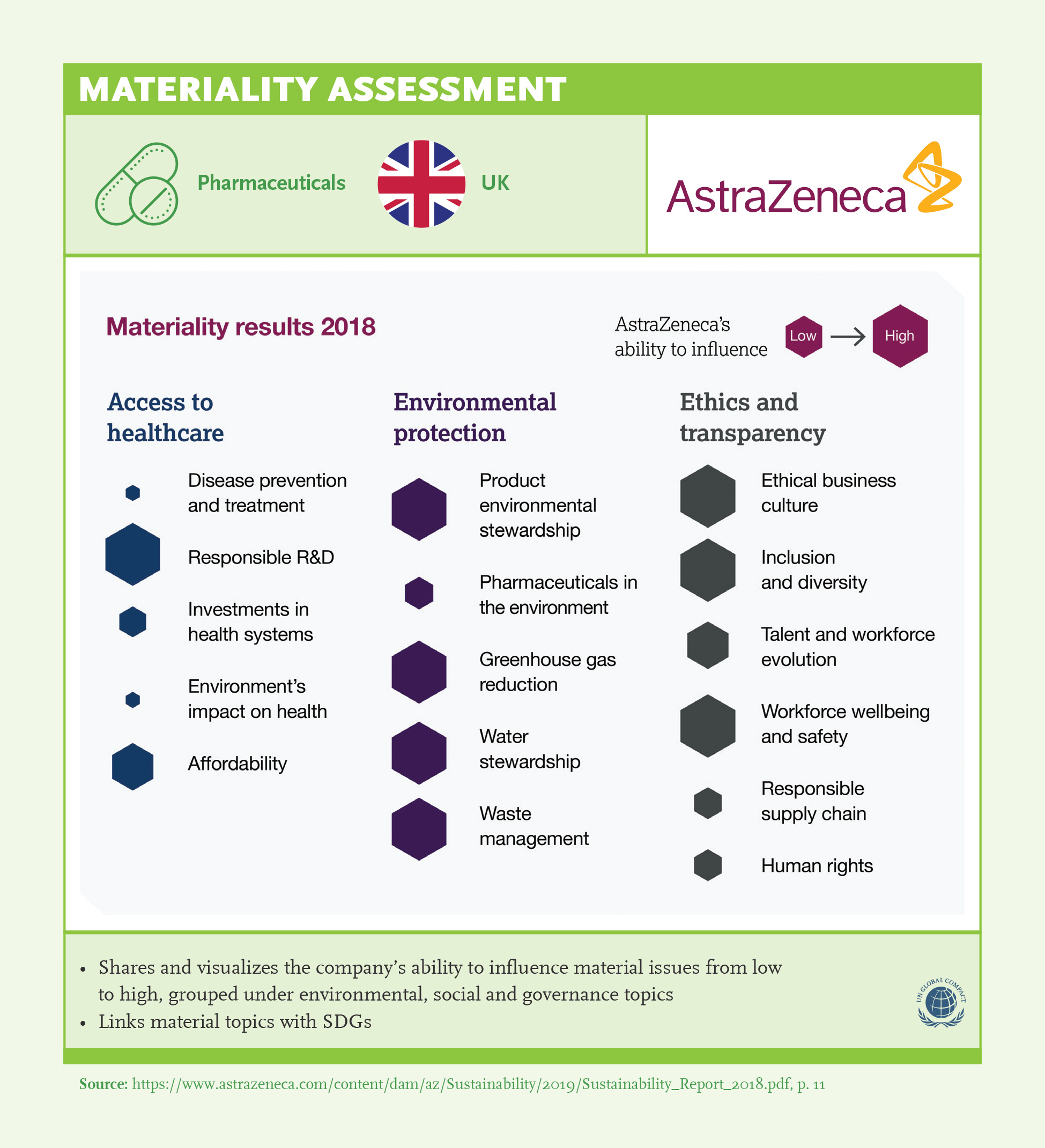
Supply Chain Sustainability
Supply chains are critical links that connect an organization’s inputs to its outputs. Many companies’ greatest sustainability risks and opportunities are in the supply chain. However, sustainability efforts of many companies are limited to measuring the sustainability of their own business operations and do not extend these efforts to their suppliers and customers.
Leading companies in sustainability accept responsibility throughout their value chains and work with their suppliers to implement sustainability initiatives on a wider playing field. This may involve utilizing their purchasing power to encourage, audit, collaborate with, and provide benchmarking and learning opportunities with its suppliers on key sustainability issues.
Recommendations
- 1Assume responsibility across value chain: Supply chains are critical links that connect an organizations input to its outputs. Many companies’ greatest sustainability risks and opportunities are in the supply chain. As a result, companies must set standards, manage risk and invest in the development of their supply chains for a step-change in sustainability impact. (Ex: Conagra Brands)
- 2Develop Code of Conduct for Supply Chain: Supply chain sustainability requierments and approach should be clearly defined through a Code of Conduct. (Ex: General Mills)
- 3Develop a comprehensive assurance process: Assurance process should cover ESG issues relevant for suppliers, and can include a variety of methods include self-declaration, independent audit and remedial action for high-risk suppliers. (Ex: Siemens, Marks & Spencer, Best Buy, CNH Industrial)
- 4Set KPIs and targets: Measure progress against goals and report more details about suppliers to assess and improve performance. (Ex: Tesco, Gap Inc)
- 5Invest in Supply Chain Developments: A comprehensive sustainability strategy includes developments for the supply chain including training and process improvements.
- 6Develop standards for audit and assessing ESG performance: Sectoral collaboration is required to develop and implement standards for audit. Examples include the Better Cotton Initiative or CO2 measurement across the value chain.
Key Findings
Companies recognize supply chain as critical stakeholders: Analyzing the companies approach to various stakeholders, supply chain is the one they pay close attention as a stakeholder. 84% of GSLs defined their supply chain as their stakeholders and 70% of them shares objectives for their supply chain.

- 85% of supplier code of conduct covers environmental issues, 88% cover social issues and 85% cover governance issues.
- Supply chain assurance process covers ESG issues – 69%, 75% and 71% respectively.
- However, less than half of those that do share their supply chain assurance results across ESG issues (29%, 31% and 19%). There is room for more transparency.
- Only half of the companies set ESG targets and share results for supply chain.

- 61% of companies share assurance results for supply chain – 53% share compliance results, 21% share certification and 17% share results for 3rd party verification.
- 77% cover Code of Conduct or Self-declaration, 65% internal audit and 48% 3rd party verification. Only 41% rely on certifications.
- 51% invest in capability building for their supply chain, 47% include remedial action for high-risk suppliers and 35% mention a channel for reporting violations and grievances.
Best Practice Examples
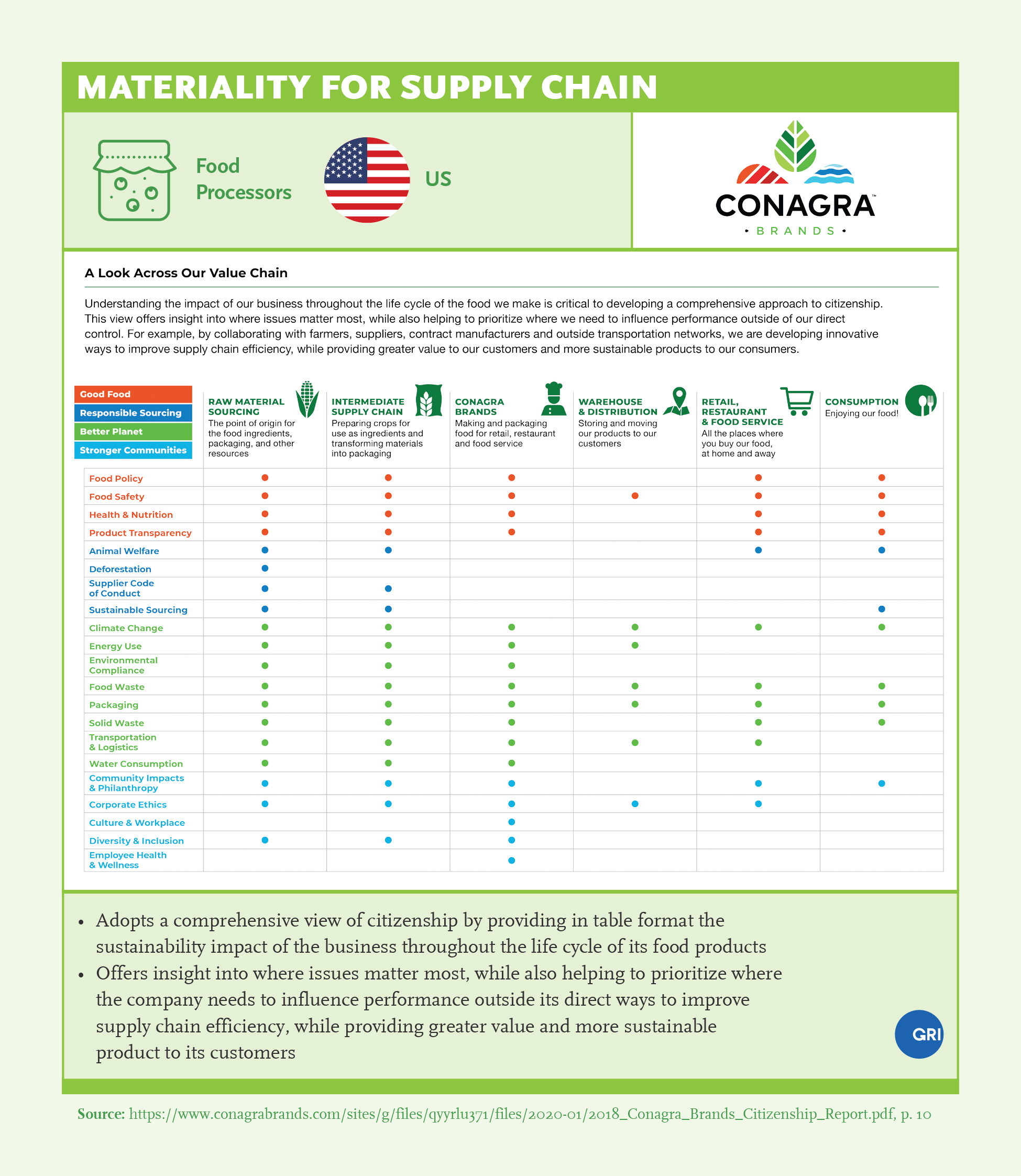
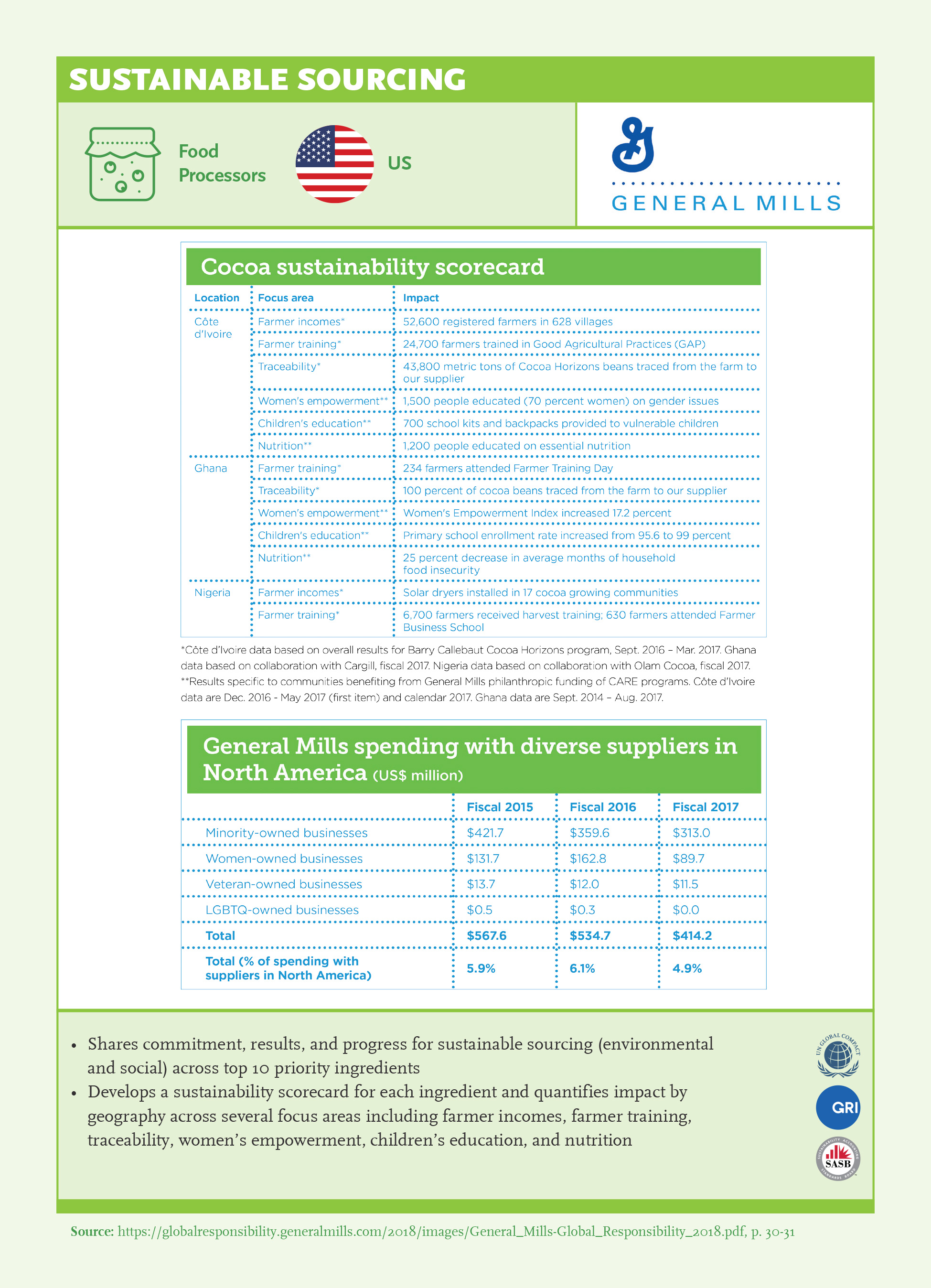
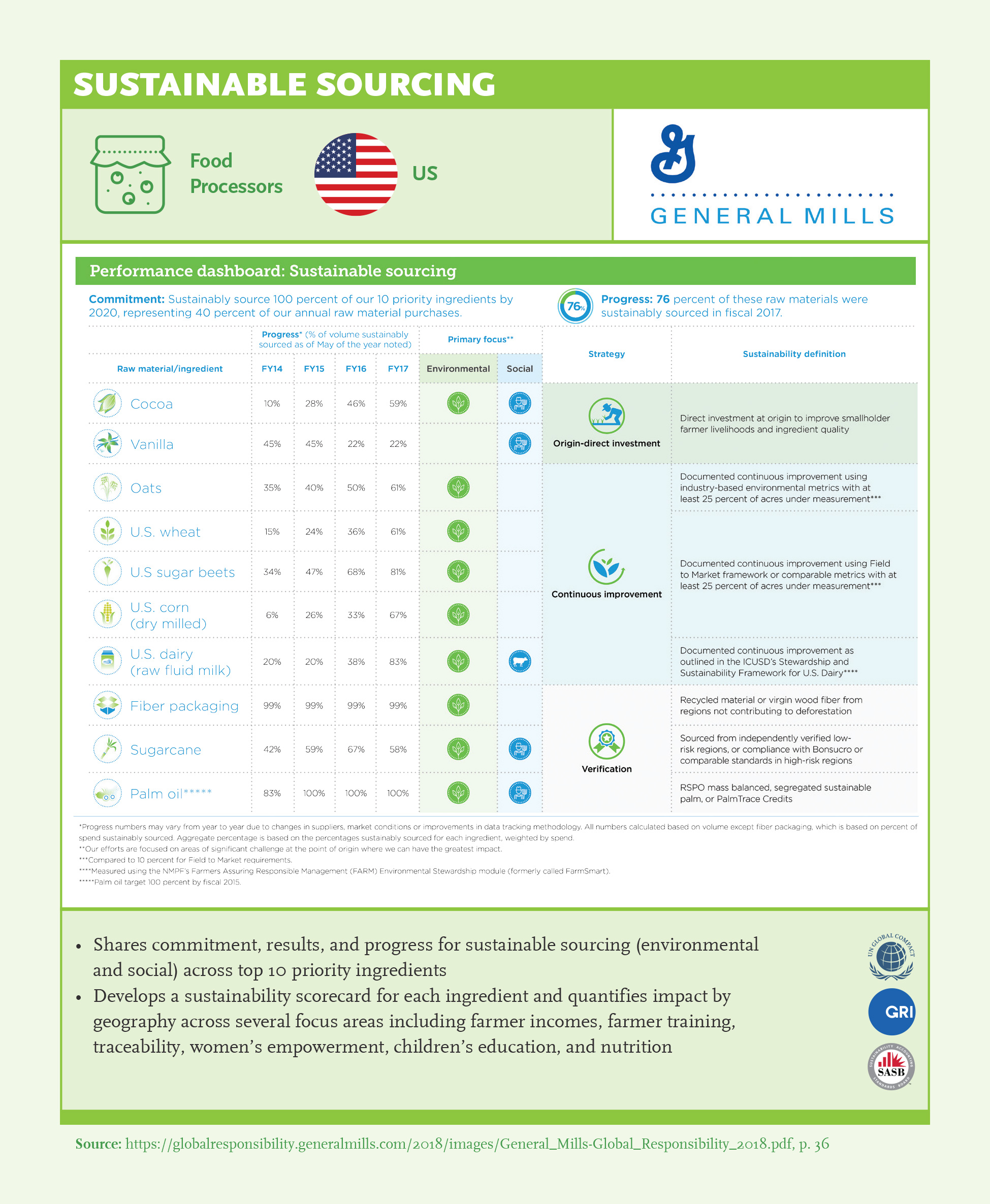
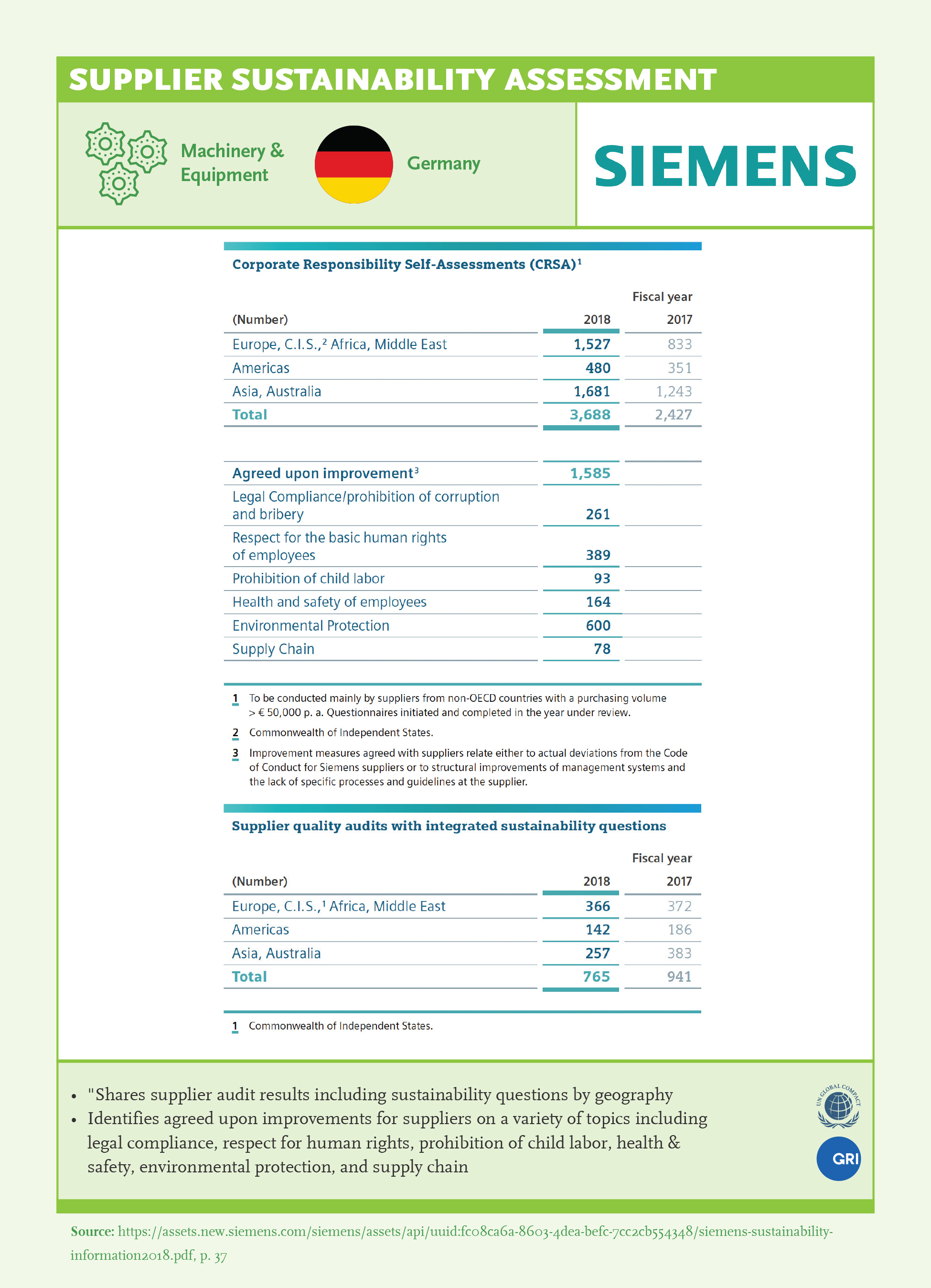
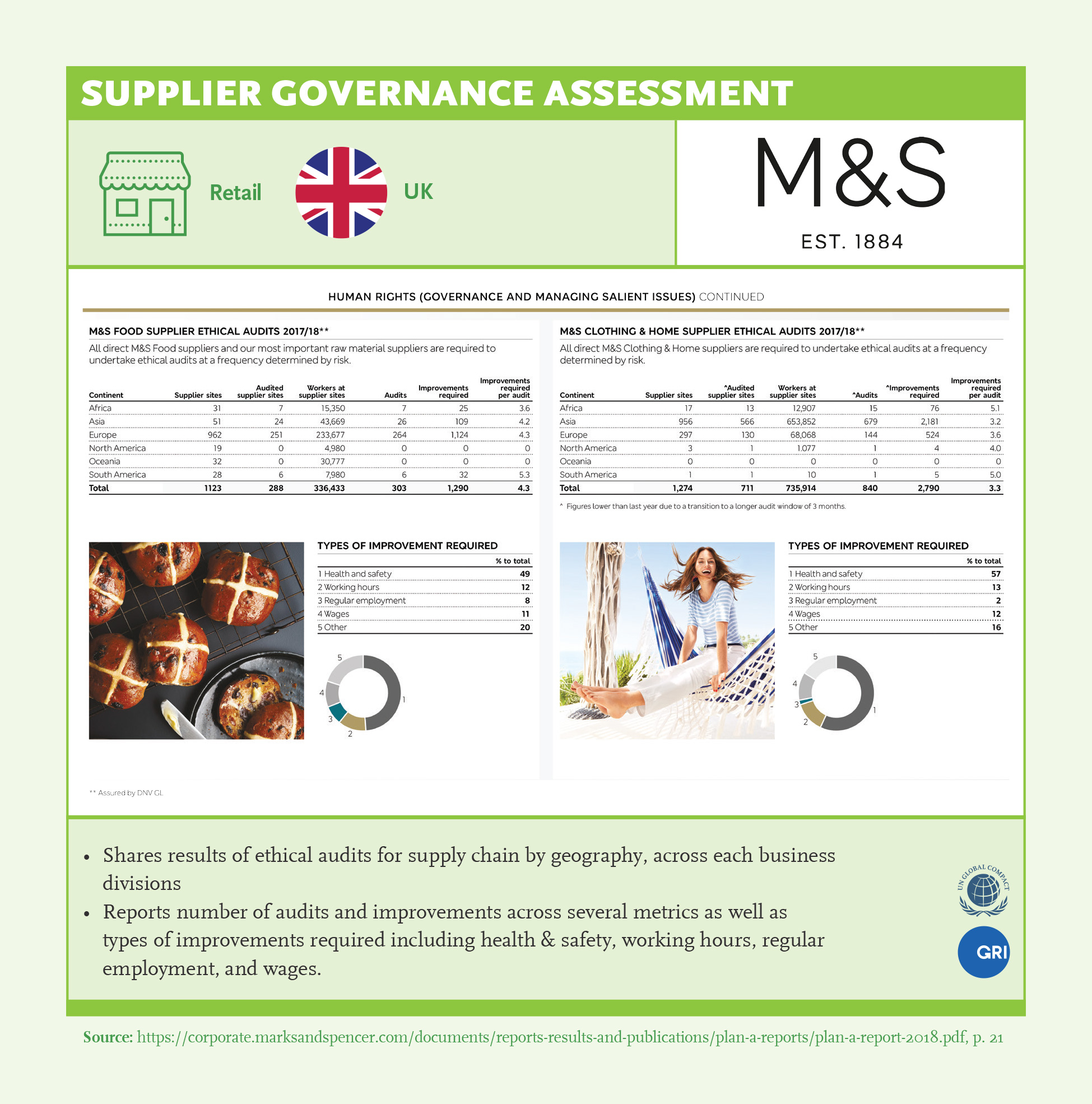
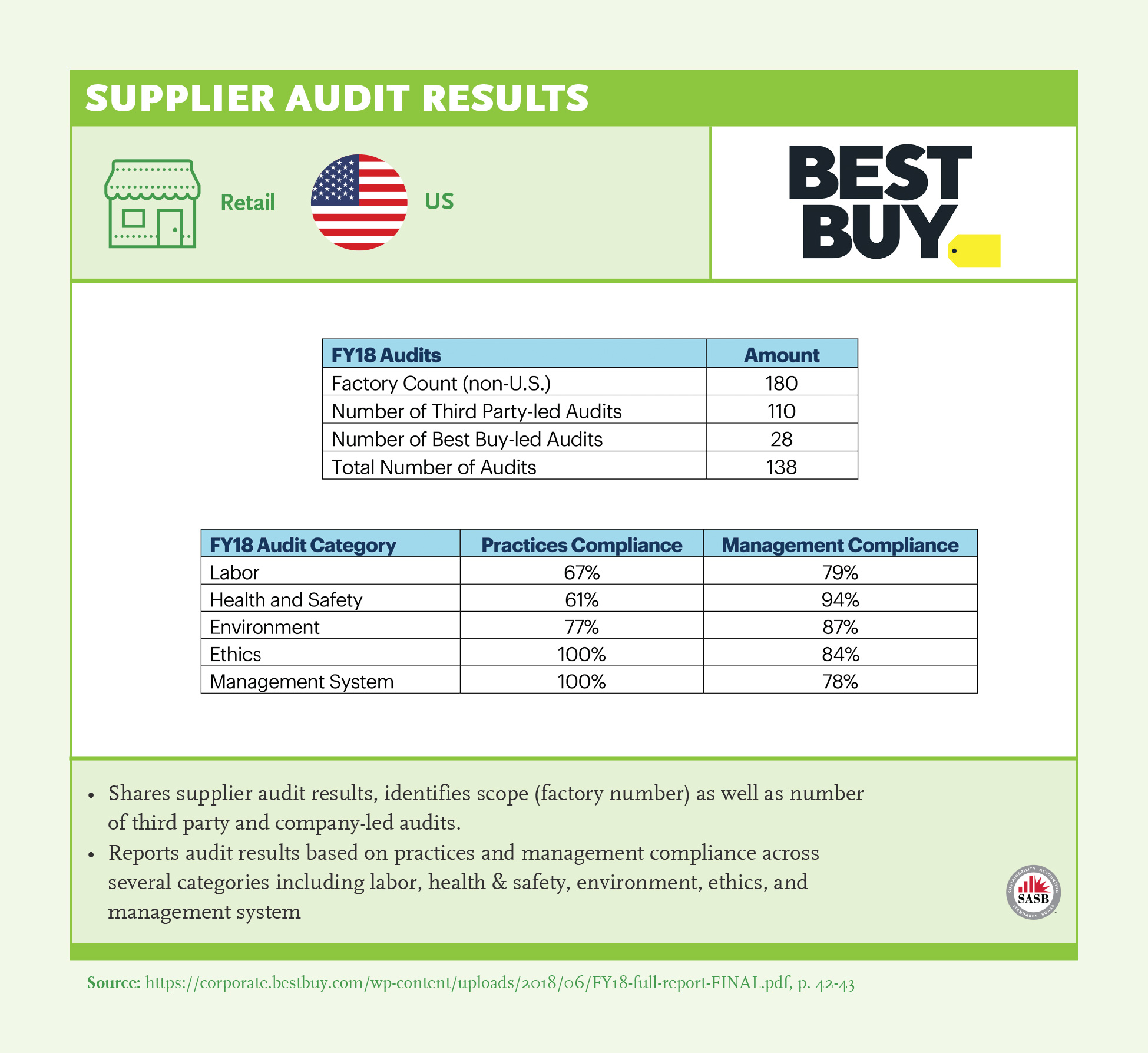
Learning and Development
Integrating sustainability into the organization’s processes and culture requires a continuous learning climate. Lessons learned should be utilized to improve decision-making processes, skills gaps and required mindset changes need to be addressed through trainings and sustainability practices need to be integrated into the company’s culture. To assess whether the learning culture is sustained throughout the cycle, we seek any evidence of learning and improvements in performance of sustainability efforts.
Training programs to address the skill and mindset gap should include ESG (eg. Compliance, unconscious bias). Developments to address organizational processes can include organizational development (incorporating lessons learned into orientation, education, promotion, compensation processes), changes in incentive mechanisms, reporting resources allocated for improvements, improving stakeholder engagement or mobilizing collective action in areas where the company’s resources would fall short (especially with respect to SDGs).
Recommendations
- 1Adopt a learning mindset, it is a journey: Sustainability is a continuous journey. To improve the quality of the journey, a learning mindset and environment are essential. Lessons learned should be utilized to improve decision-making processes, skill gaps and required mindset changes need to be addressed through trainings and sustainability practices need to be integrated into the company’s processes.
- 2Train your workforce in ESG: Ensure coverage of learning initiatives across related sustainability areas (eg: climate change, unconscious bias, compliance). (Ex: Mahindra & Mahindra)
- 3Report results by geography, cover management and employees: What is being done in different levels and jurisdictions of the company matters, the entire organization should step-up to embrace sustainability as a way of doing business. Detailed disclosure on these practices signal to investors that the company is taking action to develop its human capital in sustainability. (Ex: Evonik)
- 4Think of building capacity in your ecosystem: Companies should ensure their training and action plans encompass a wide range of stakeholders including supply chain and local communities. (Ex: Diageo)
- 5Establish a learning loop for continuous improvement by disclosing remedial action to address gaps: Best-practice companies disclose gap assessment and how they plan to address gaps. (Ex: Marks & Spender, Mondelez, CNH Industrial)
- 6Provide board leadership and oversight for deployment: Boards need to take action to ensure that the sustainability agenda of the corporation is an integral part of its culture and systems to assure learning and continuous improvement.
- 7Incorporate lessons learned into the organizations processes and culture: For this purpose, the key sustainability issues need to be identified and incorporated into strategies, policies, objectives, and associated management systems with a particular view towards value creation opportunities.
Key Findings
Skills Development
The complexity of managing sustainability calls for corporations to implement their sustainability agenda through a continuous learning process. Such a process needs to involve all stakeholders, in order to integrate sustainability into the culture of the organization. Only when all stakeholders are acting together in an ecosystem can goals such as human rights, non-discrimination, environmental or product stewardship be truly achieved.
For example, it is not sufficient to have the correct way of sourcing, unless you make sure your suppliers adopt the same standards of responsibility. This might require expanding training programs across the supply chain and/or customers. Therefore, we also evaluate whether coverage of the improvement initiatives encompass all relevant stakeholders including all levels of the organization, all geographies in the company’s jurisdiction, supply chain and communities.

- 93% of companies report that they conduct trainings on social sustainability issues, while 75% report governance (compliance) and only 60% report environmental trainings. The majority of social sustainability trainings focus on employees and 83% consist of health & safety trainings.
- There is room for improvement in reporting training metrics and outcomes. We find that 87% of the companies in our sample report metrics for social trainings, while only 58% report governance training results and 46% report environmental training results.
- Social training results are given with a breakdown of geography in 84% of the reports we analyzed.
- Social training results are given mostly for management (75%) also for communities (39%) and employees (31%).
- There is significant room for improvement in reporting training results for communities and the supply chain, especially in terms of governance trainings. To establish trust between the institutions in their ecosystems, companies must take responsibility to improve transparency and governance in the environments in which they operate.
- There is very limited results sharing for environmental sustainability training for all stakeholders (<25%).

- Almost all the companies report sustainability training (93%): Highest for health & safety (83%) and leadership development (73%). There is room for improvement in diversity & inclusion trainings (67%) and stakeholder engagement (50%).
- Only 60% of Global Sustainability Leaders report environmental sustainability training: Highest for responsible sourcing (40%), below 20% for managing natural resource use and efficiency. Companies must invest in training their workforce, management and supply chain on climate change, energy efficiency, waste & packaging, and water stewardship.
- 75% of companies in our sample report compliance training: Only 42% include compliance training for supply chain.
Deployment
Achieving sustainability goals require mobilizing the workforce and ensuring a continuous learning mindset is embedded in the company’s processes. A successful deployment program requires establishing a framework for effective communication and learning for the employees and the members of the supply chain and establishing clear guidelines and remedies for those who fail to follow the corporation’s sustainability standards. The organization must incorporate sustainability issues into hiring and remuneration policies as well as supplier identification processes and make sure that the management information systems provide for adequate, appropriate, and verifiable data on key sustainability priorities.
Awareness of and responsibility for sustainability cannot be delegated to one segment of the organization. It must be firmly established at the top and inculcated throughout all levels and aspects of the company. And then it needs to be practiced as an integral part of doing business. Internal control systems, external reviews, and stakeholder engagement processes. Compliance requirements should all be utilized for continuous learning opportunities, rather than as tick the box compliance requirements.

- 76% take action based on learnings, 76% share resources allocated for development, but only 52% report gap analysis on sustainability issues: even lower for governance (16%) and environmental (10%) topics.
- Gap analysis is mostly done for employees – looking in, <10% of companies disclose gap analysis by geography, for supply chain and communities.
- Very low results disclosure by geography: Less than 1⁄4 disclose results for actions and resources allocated, only 2% disclose gap analysis.
Best Practice Examples
